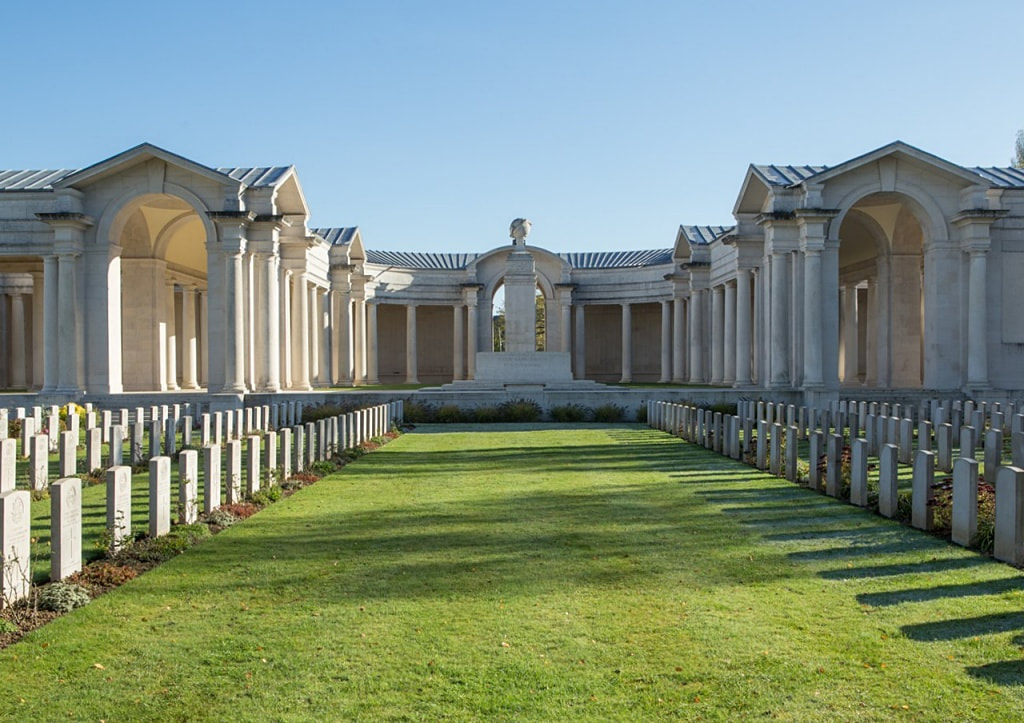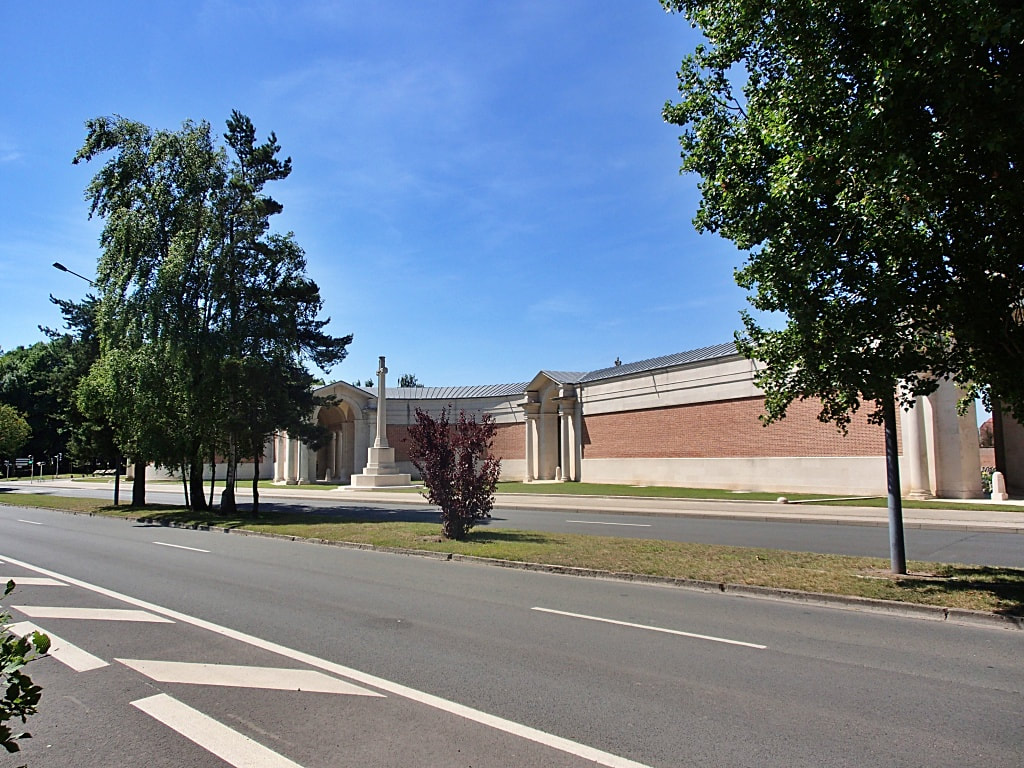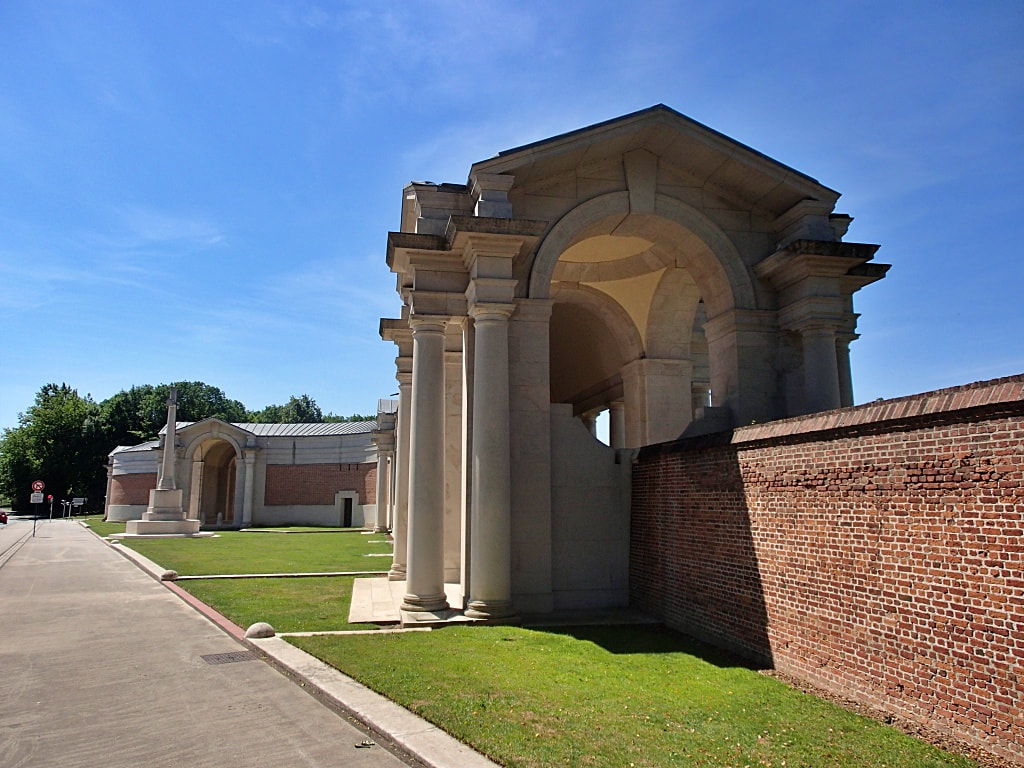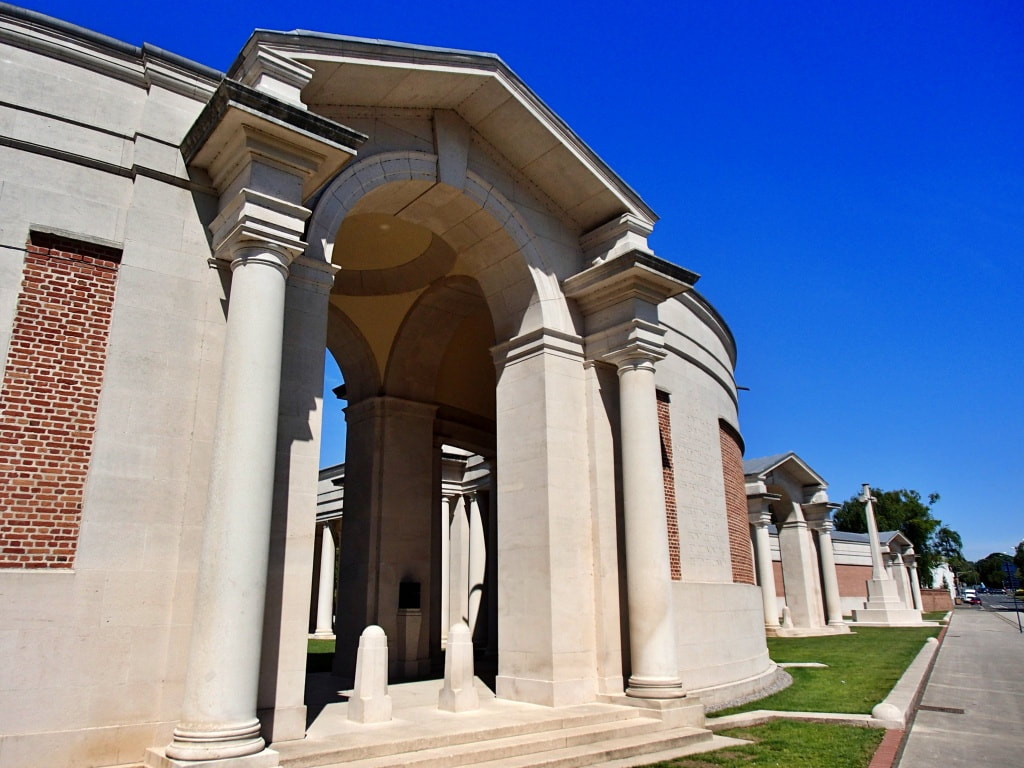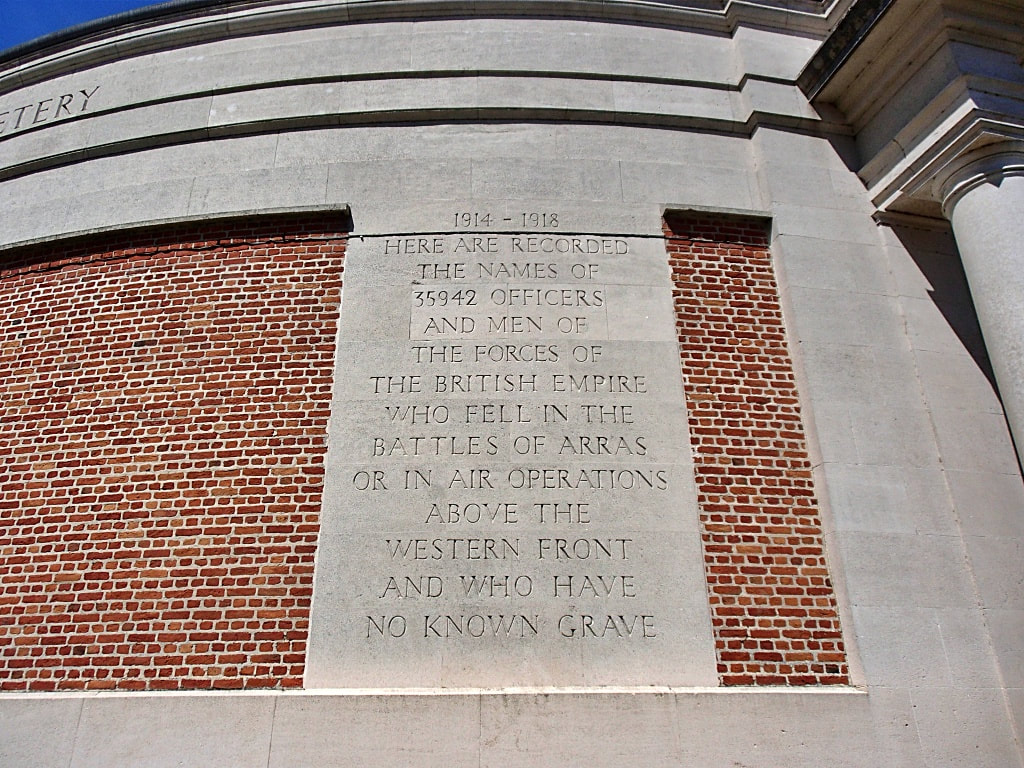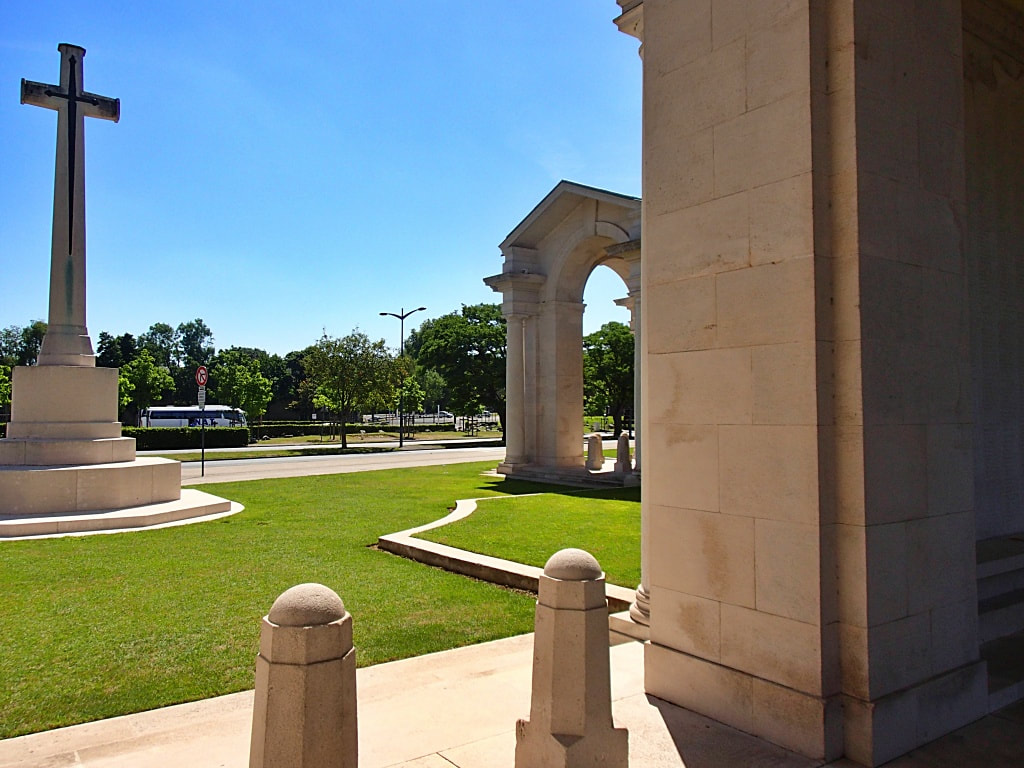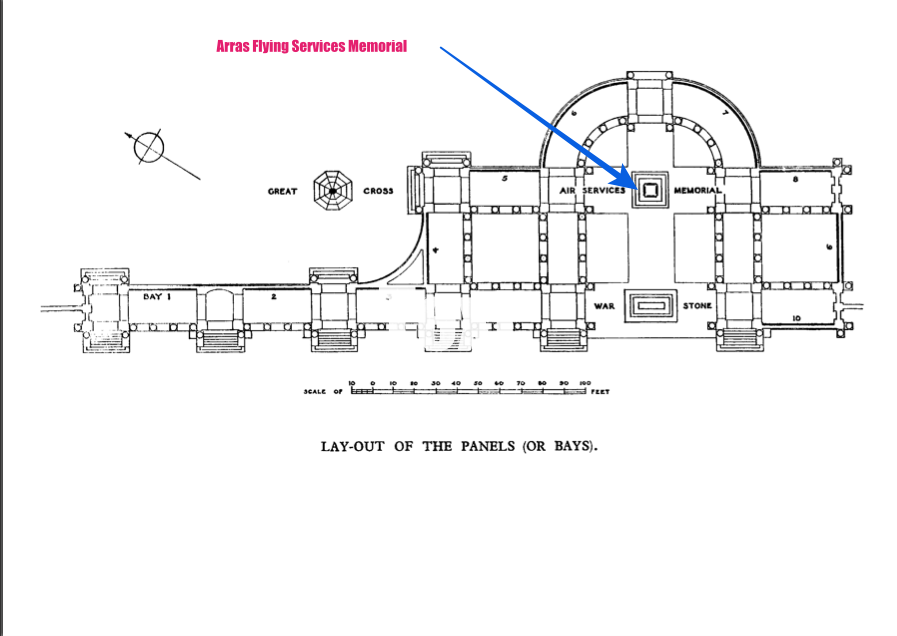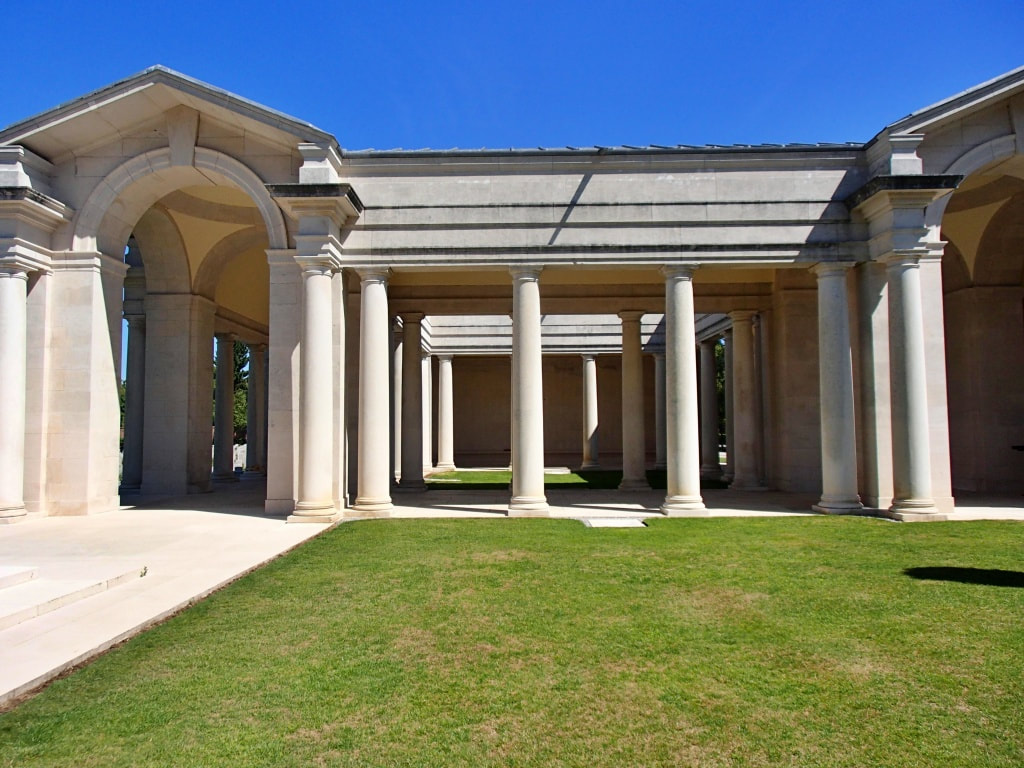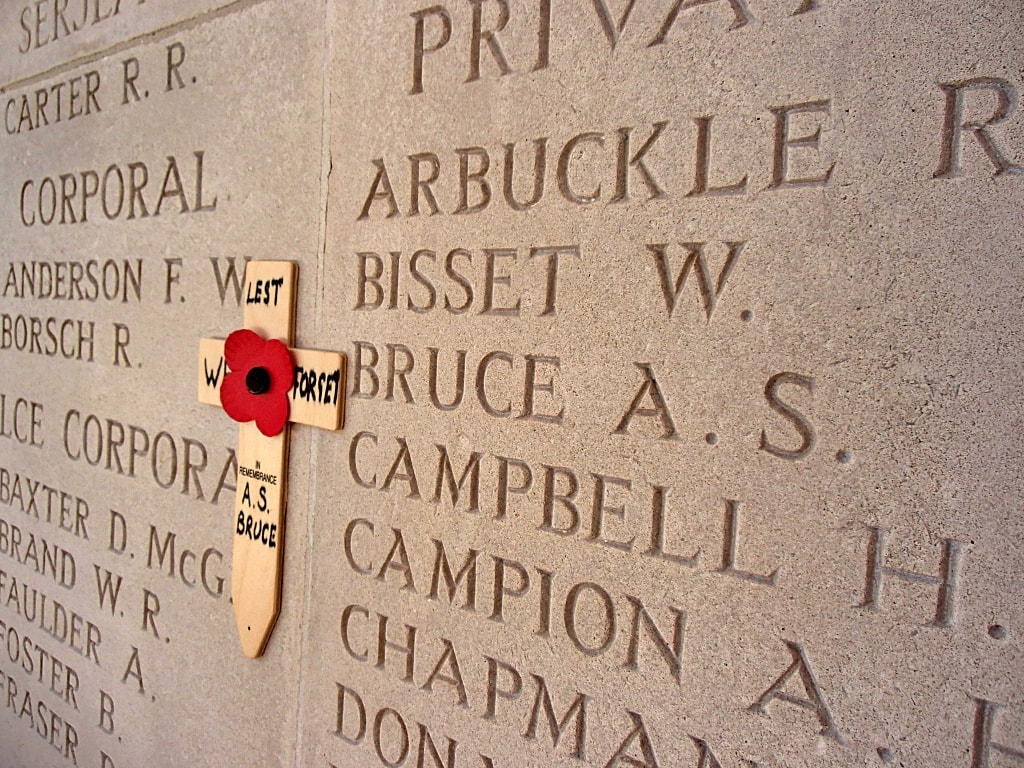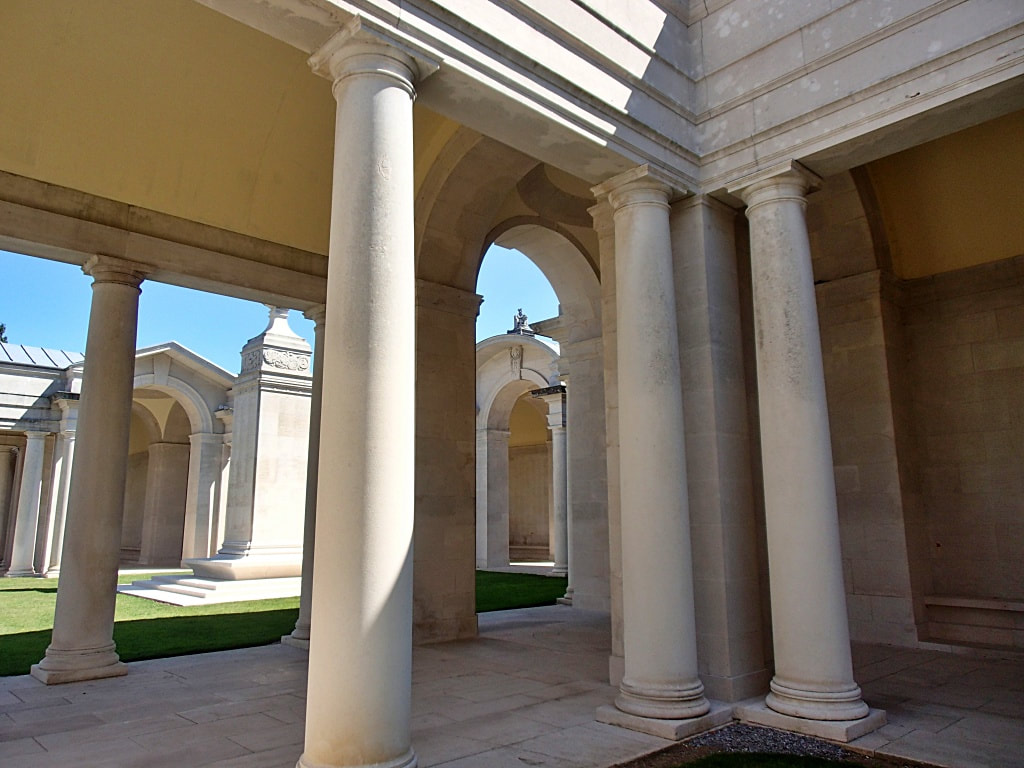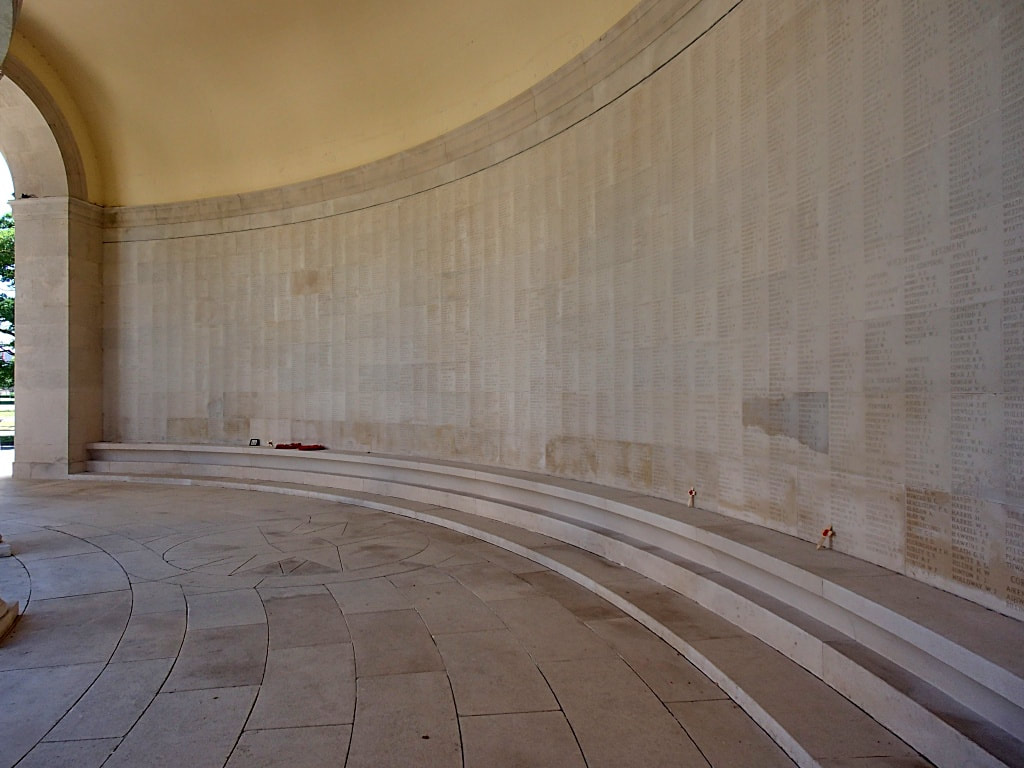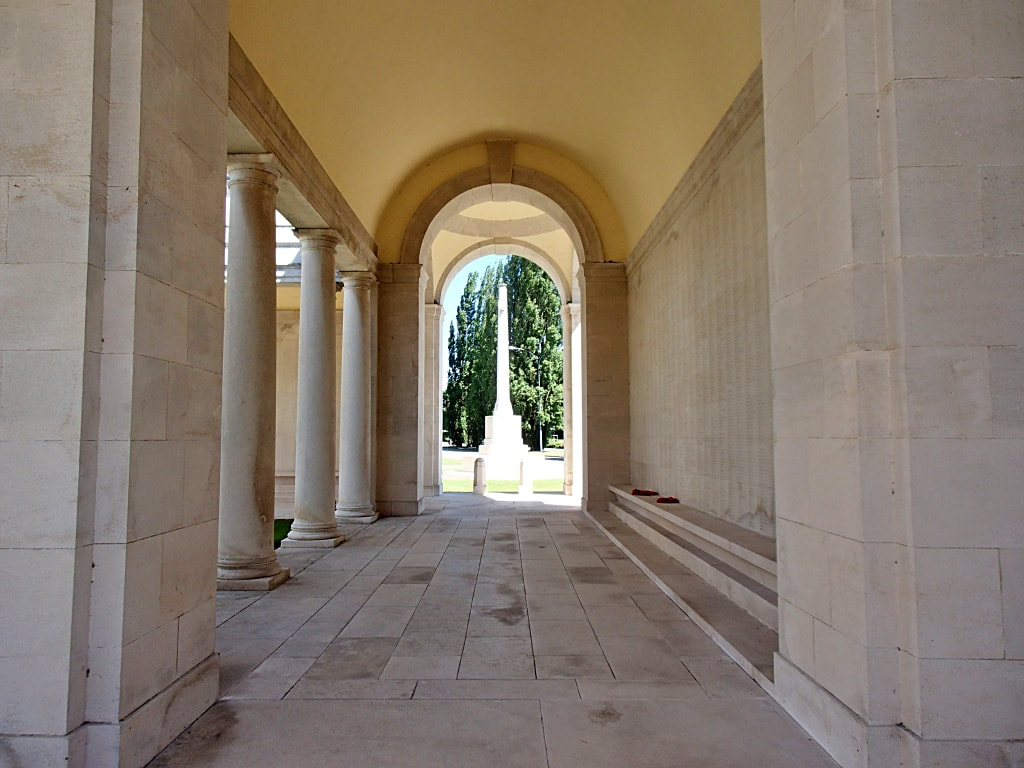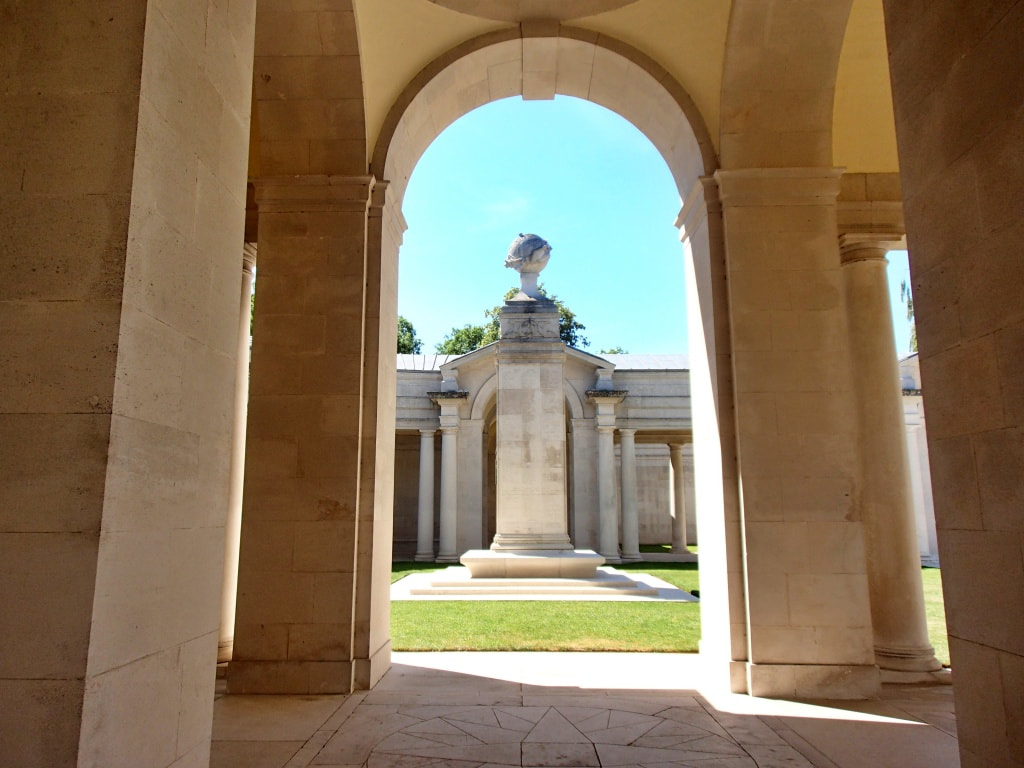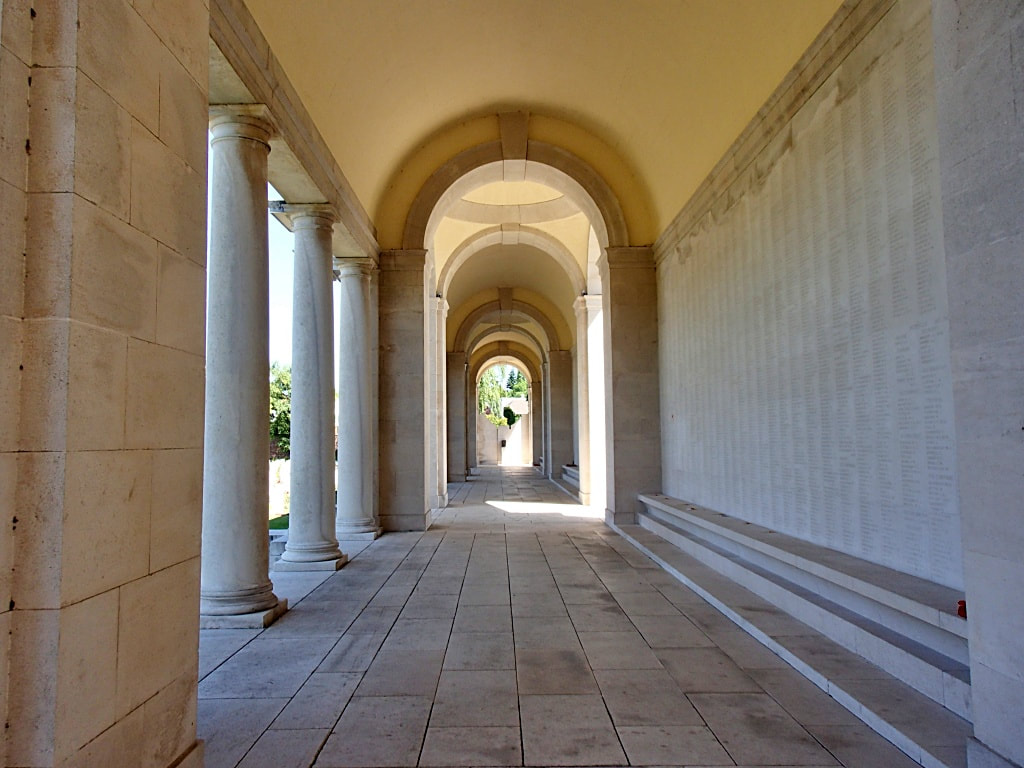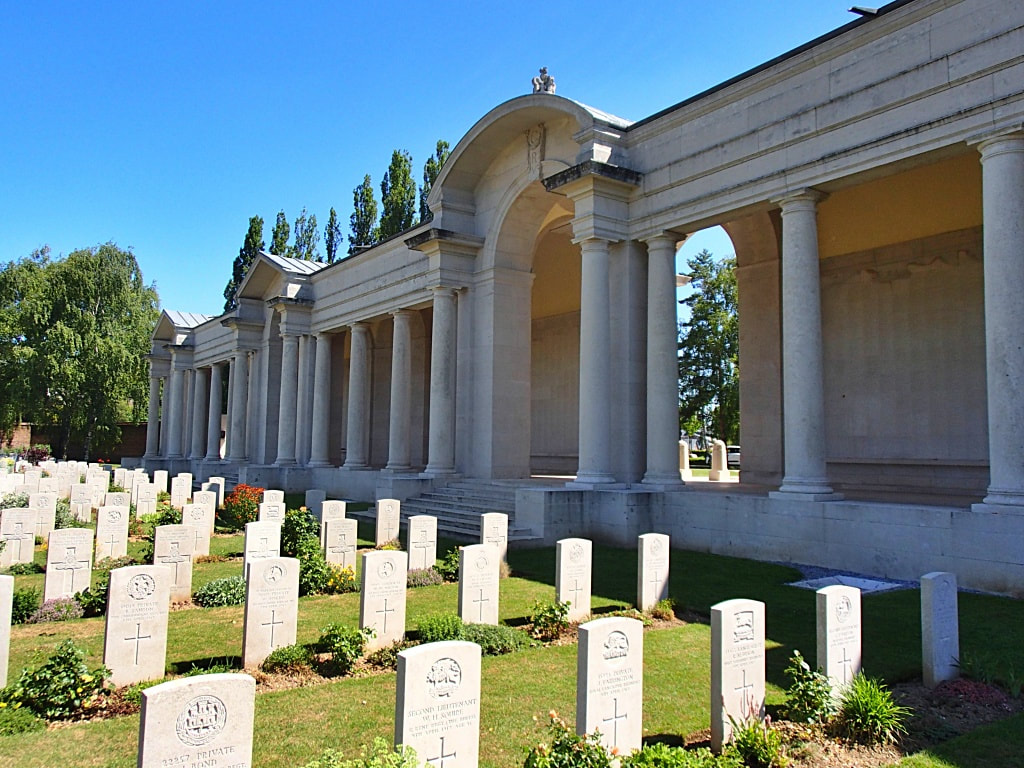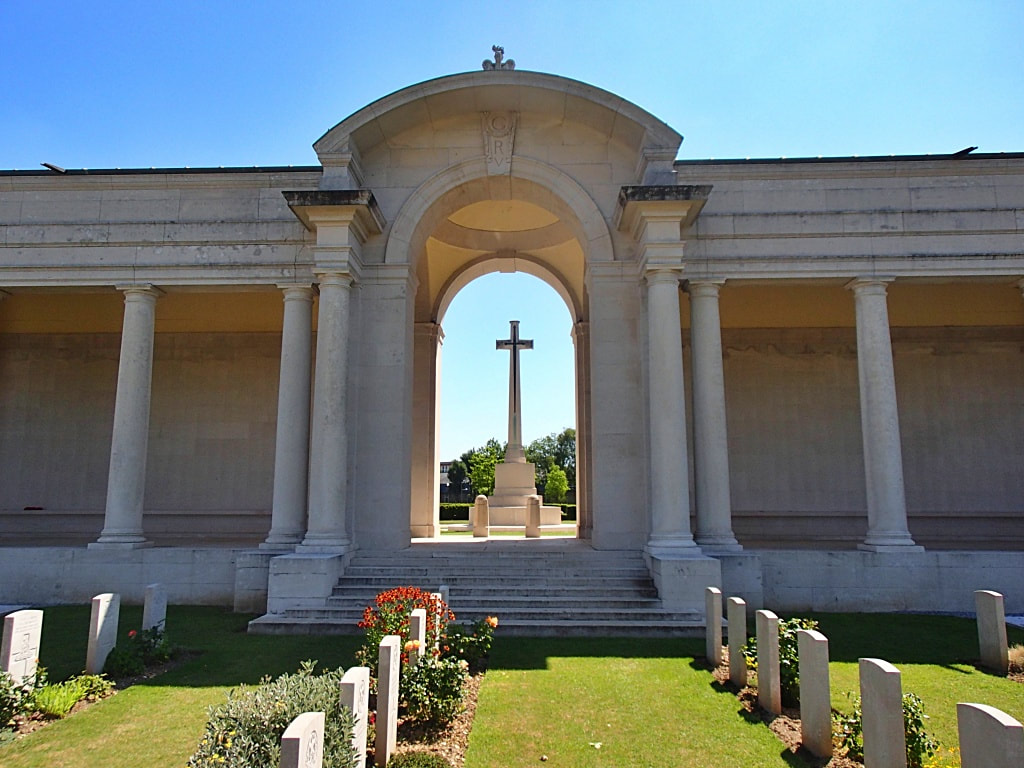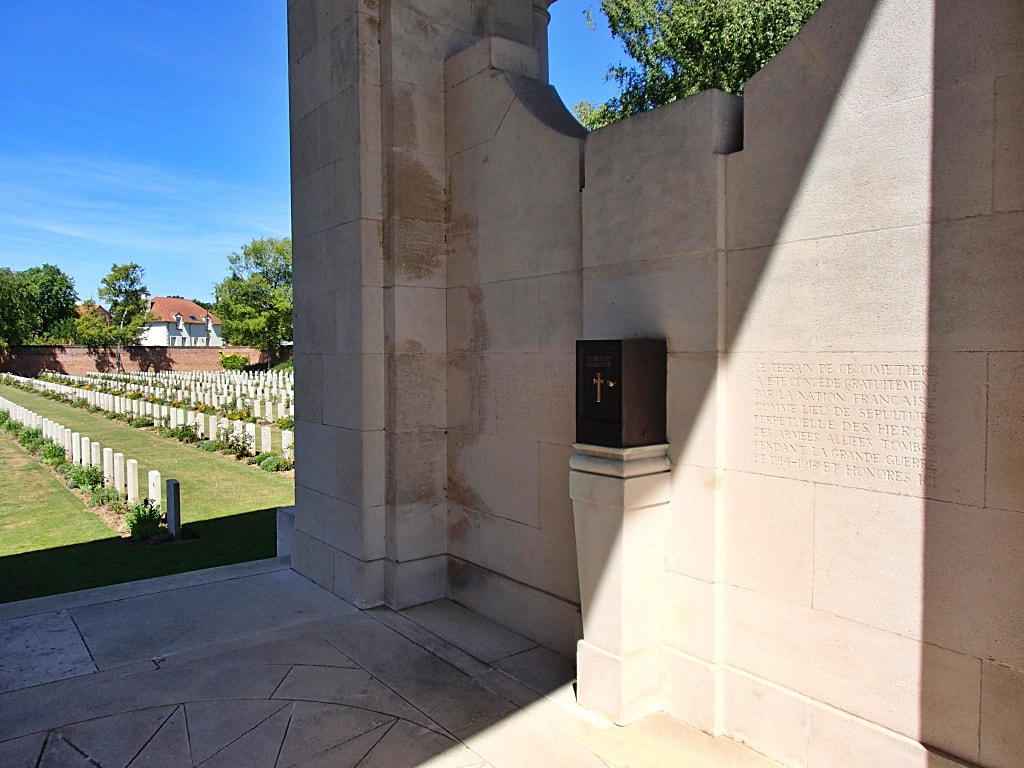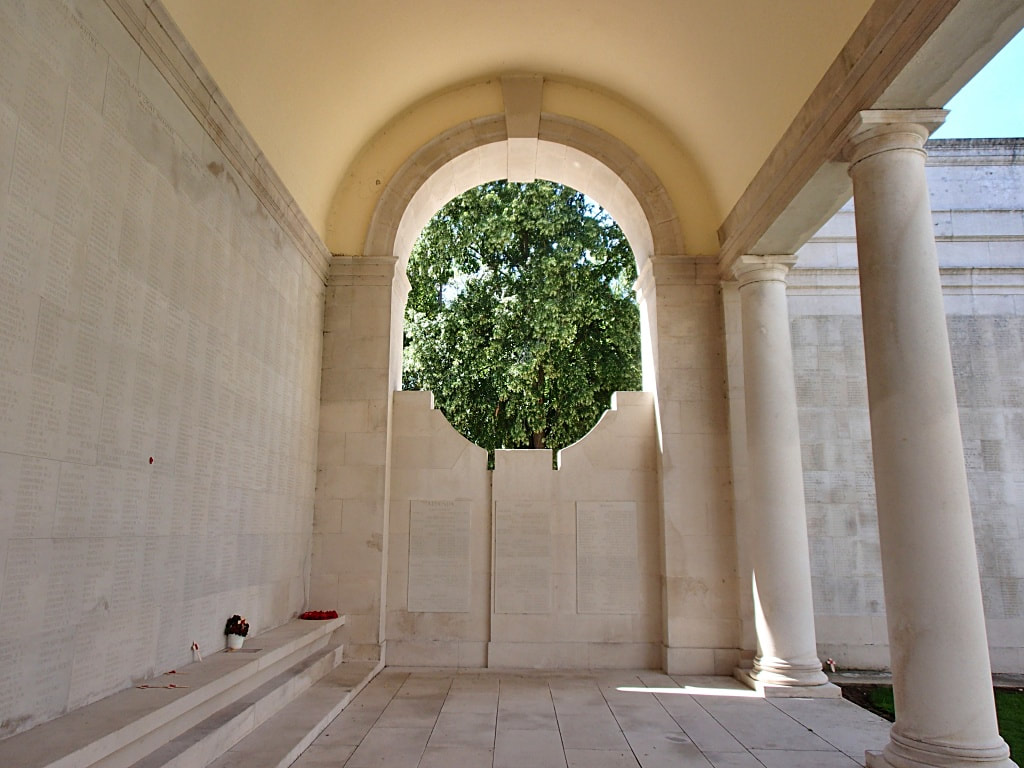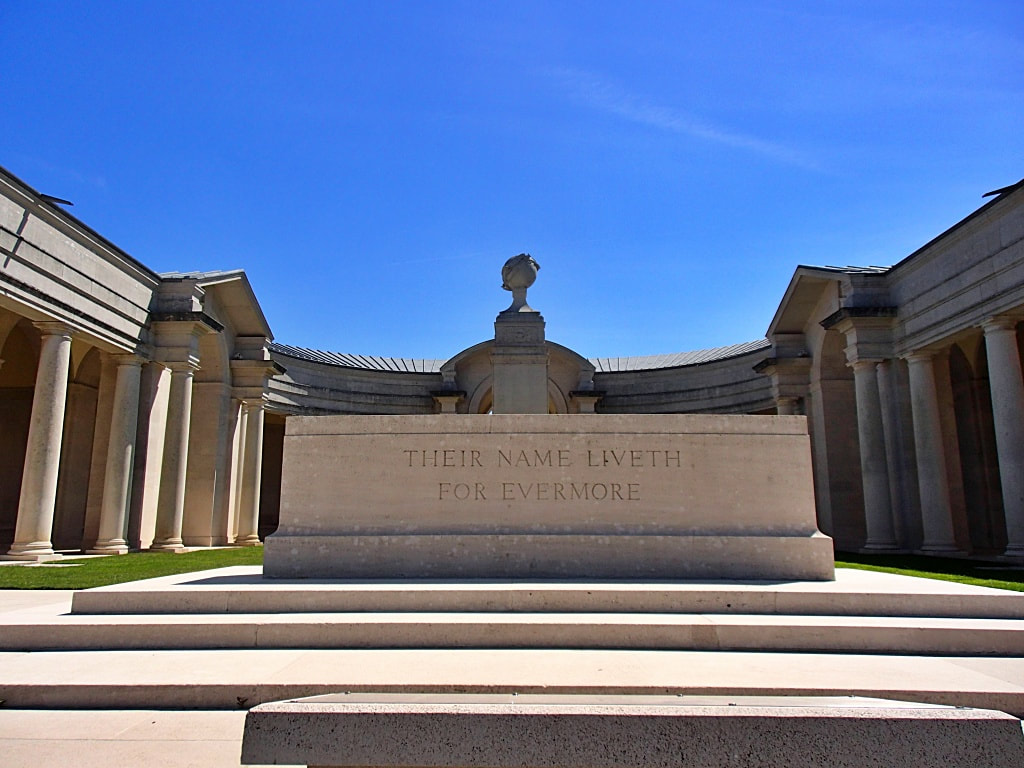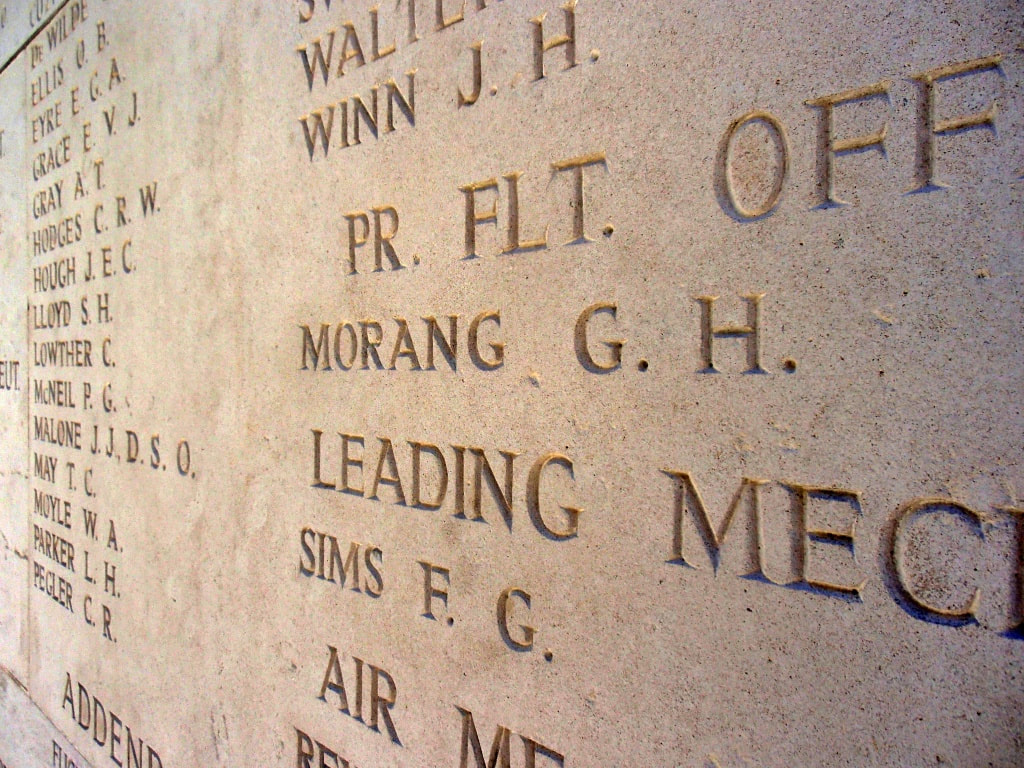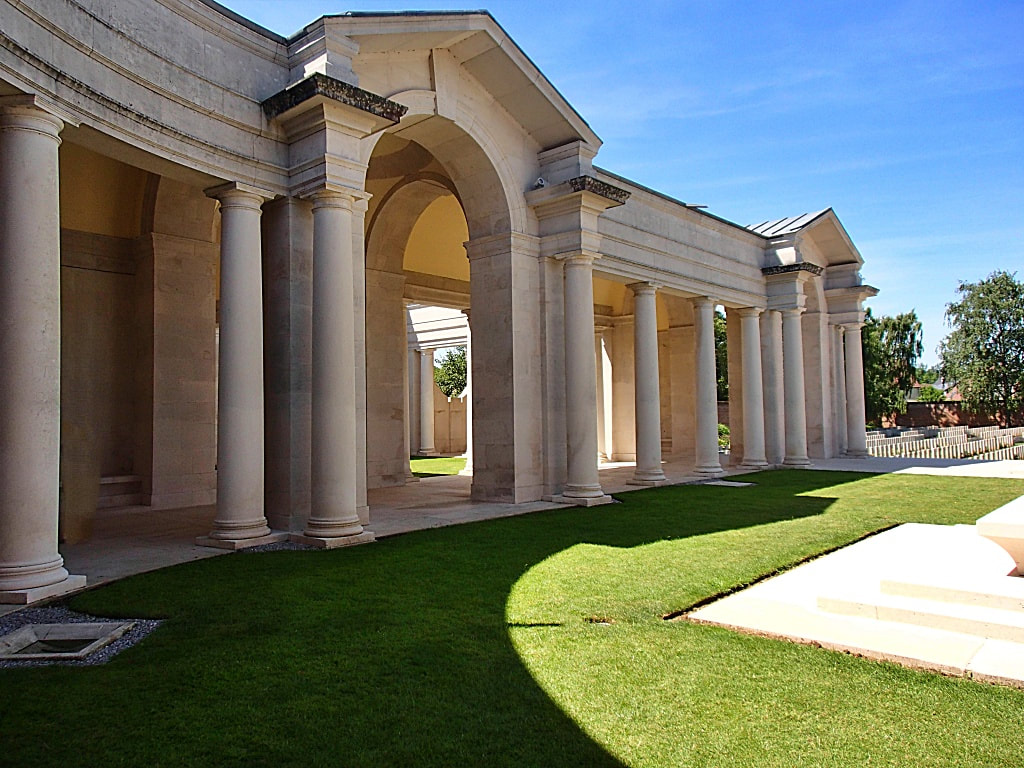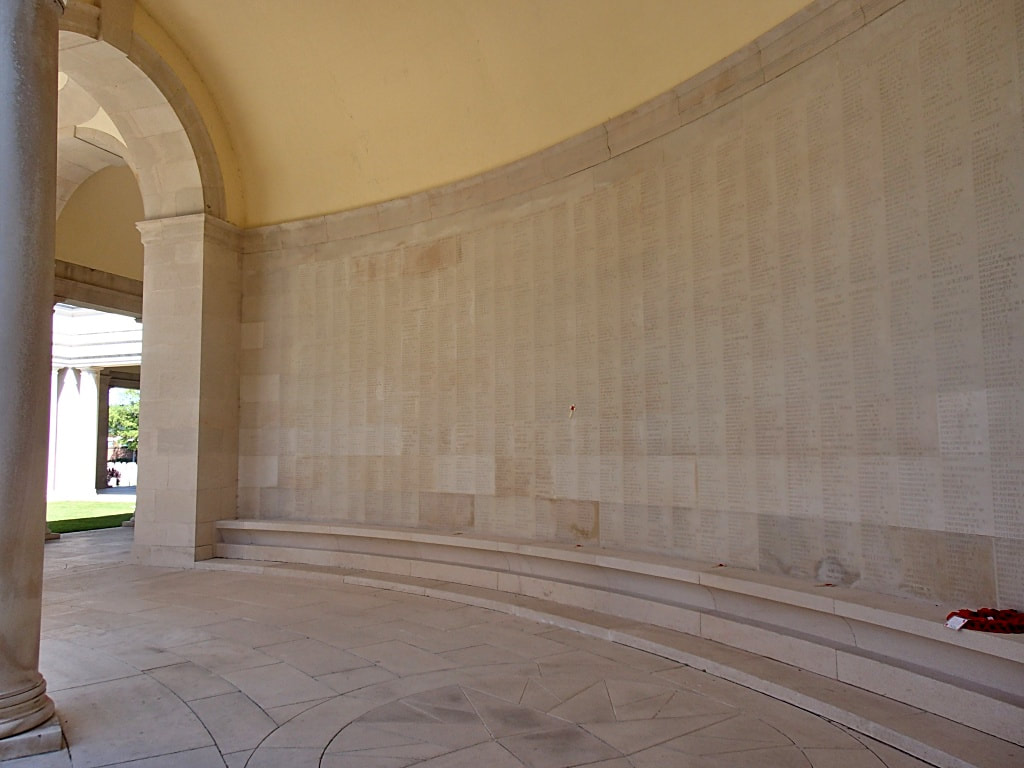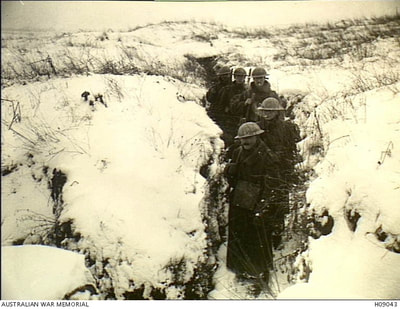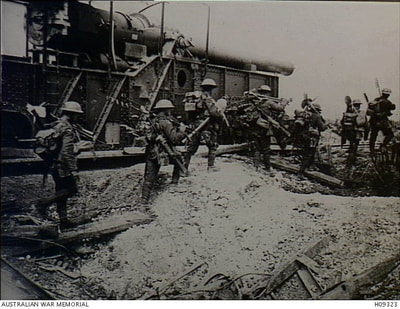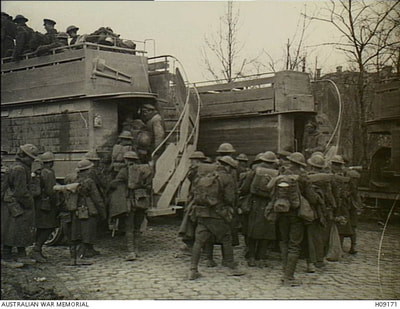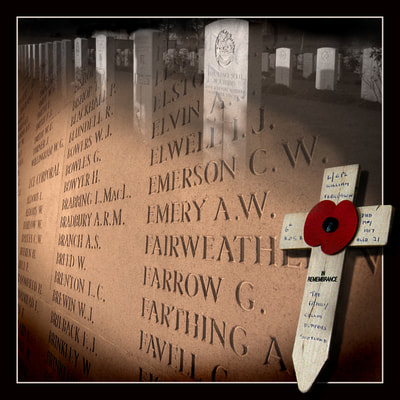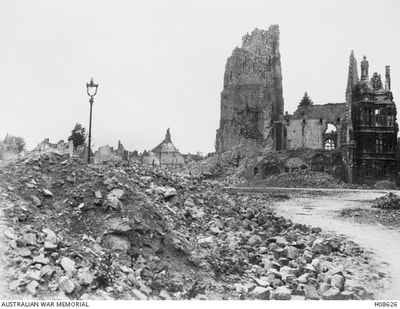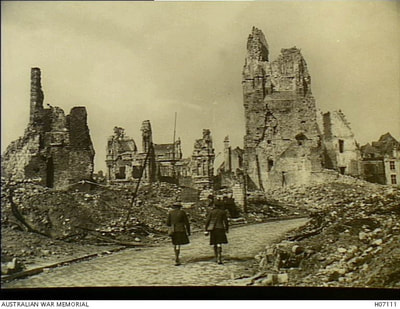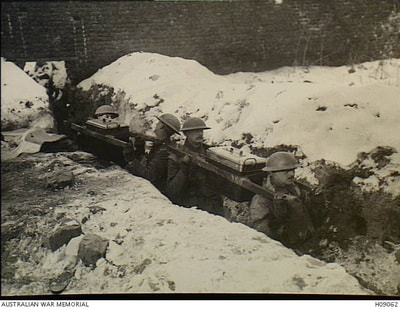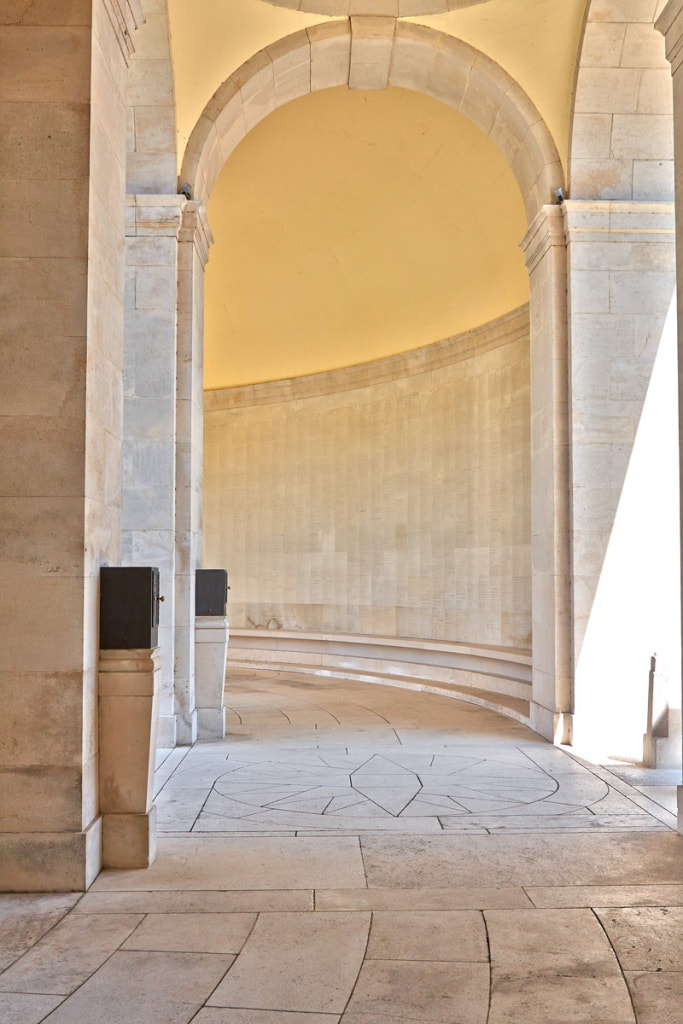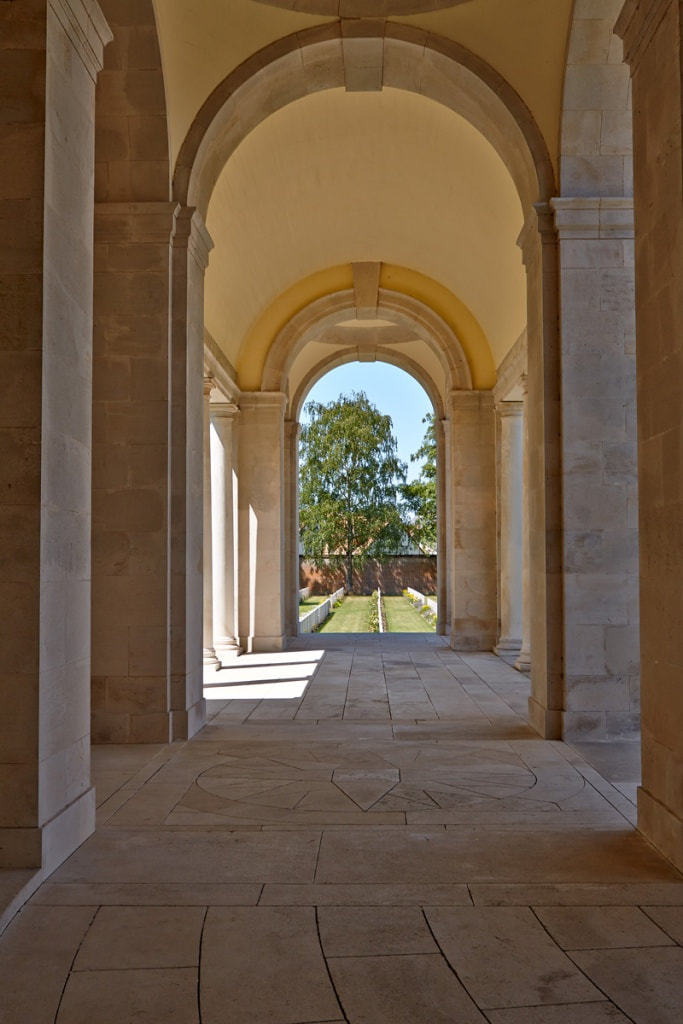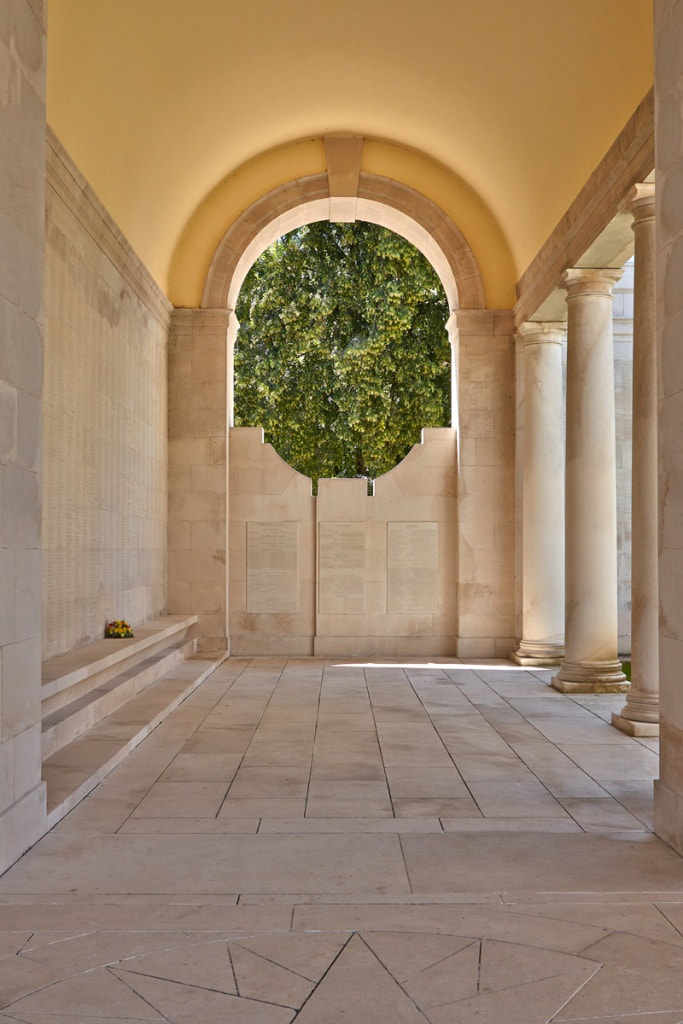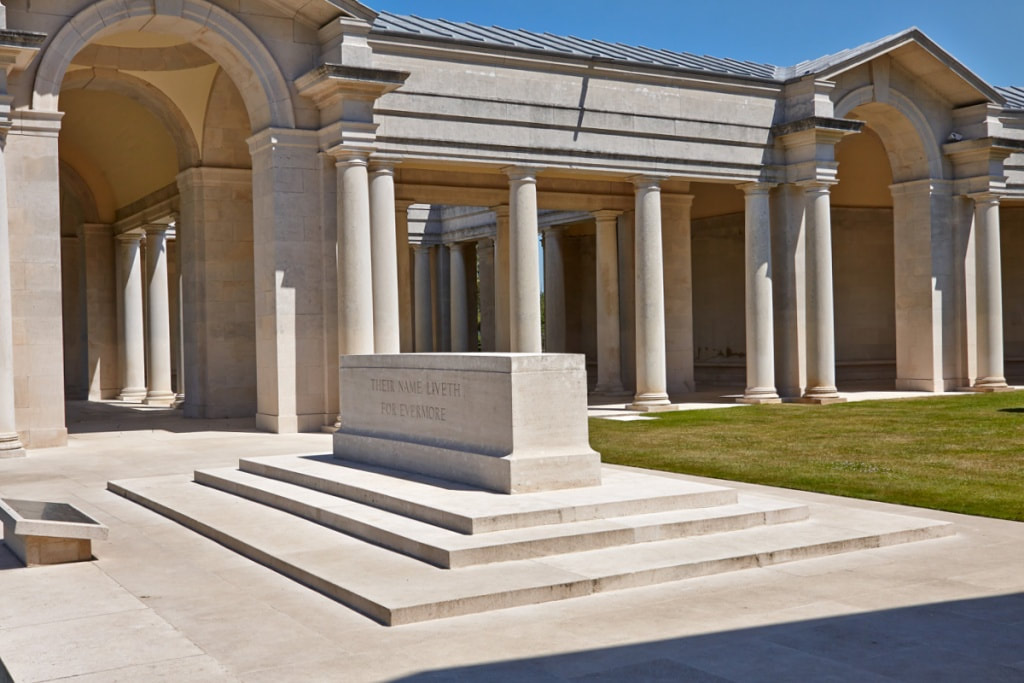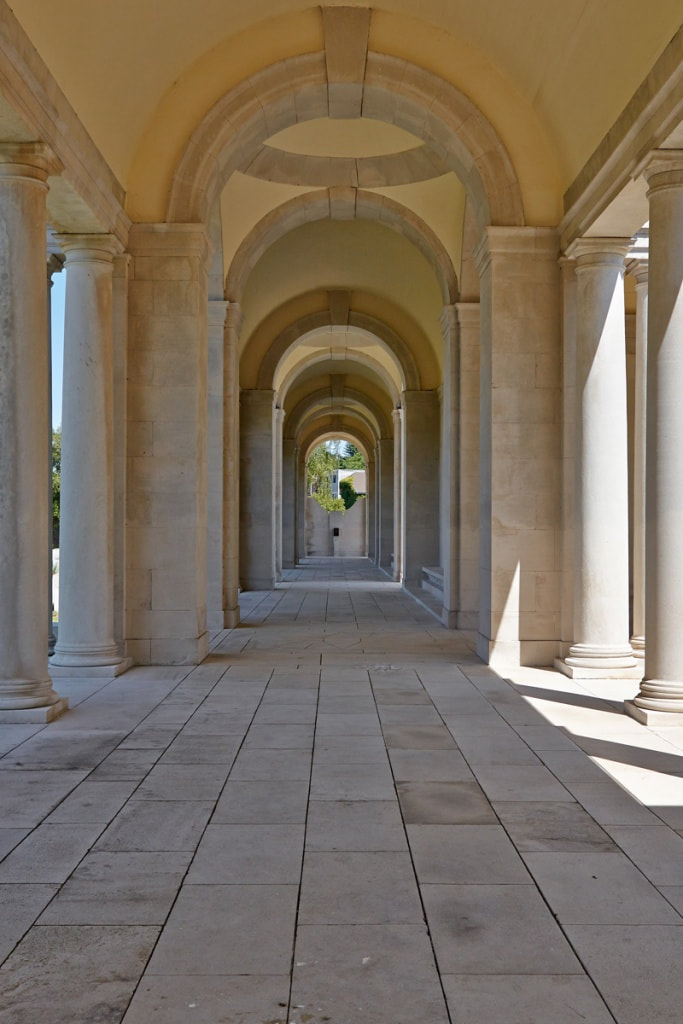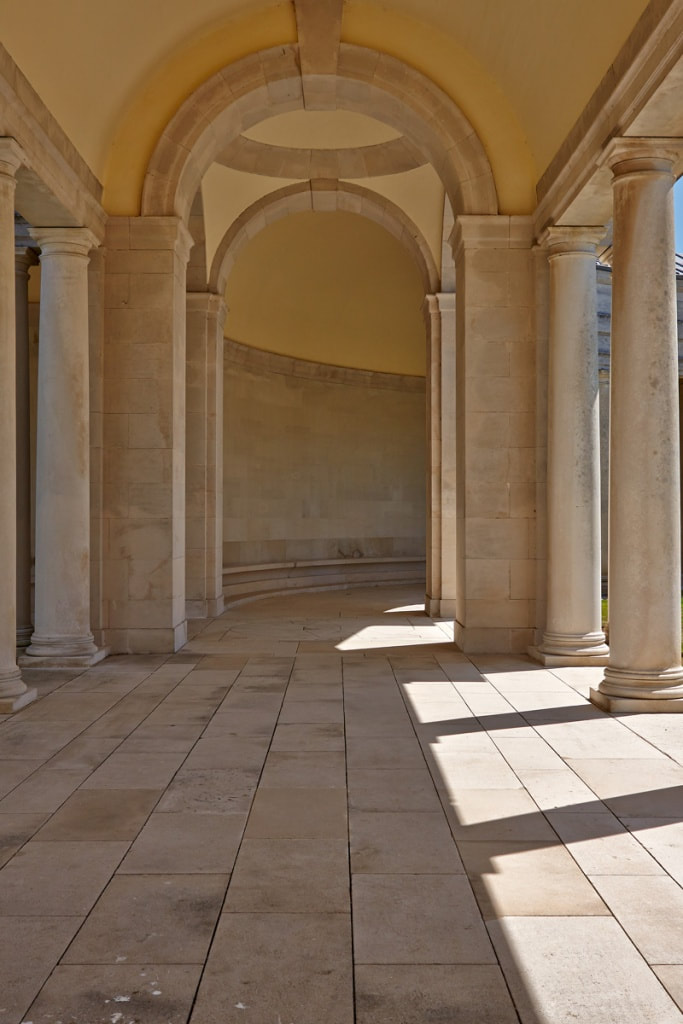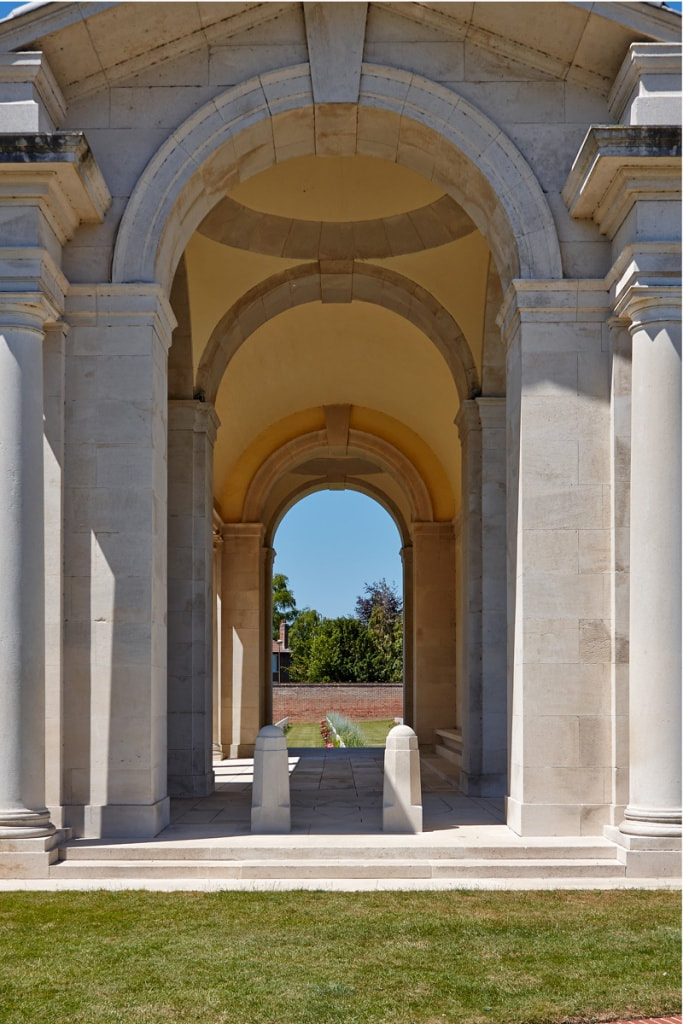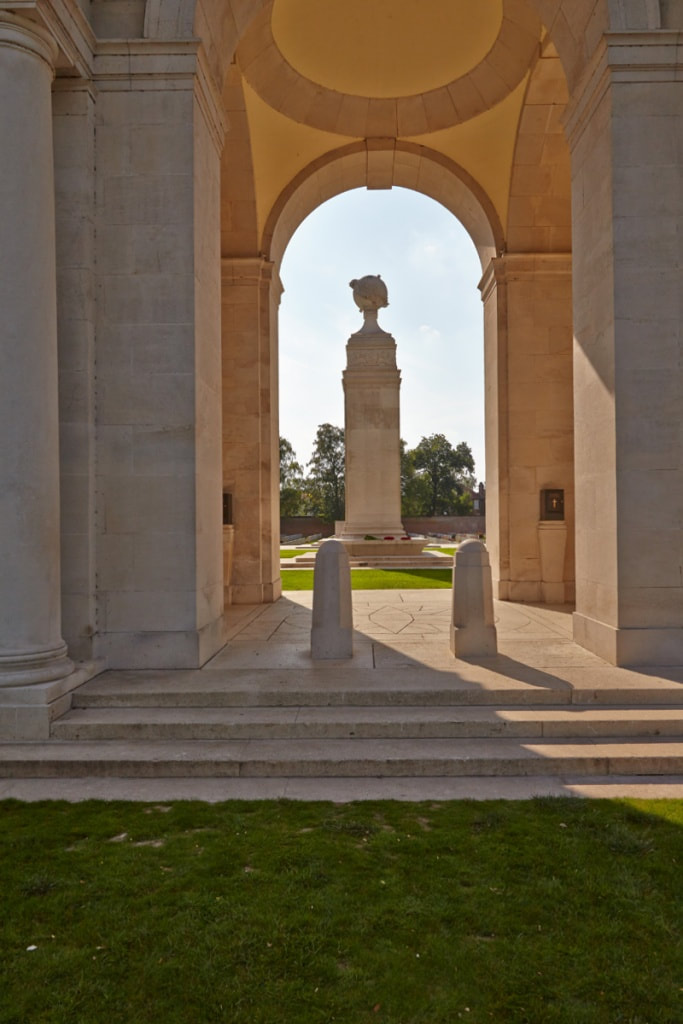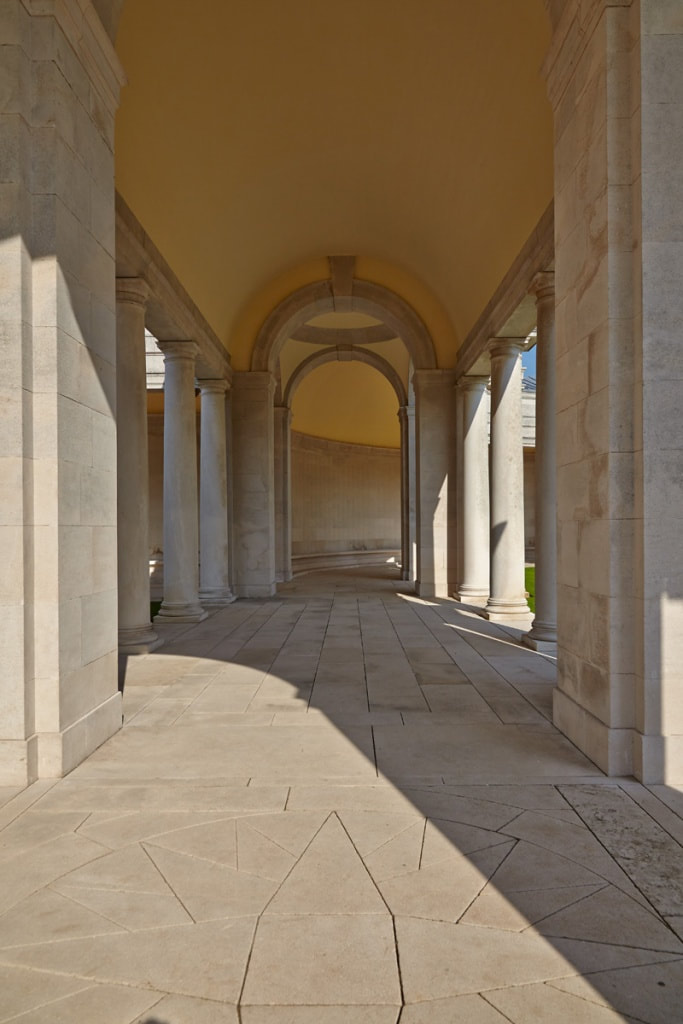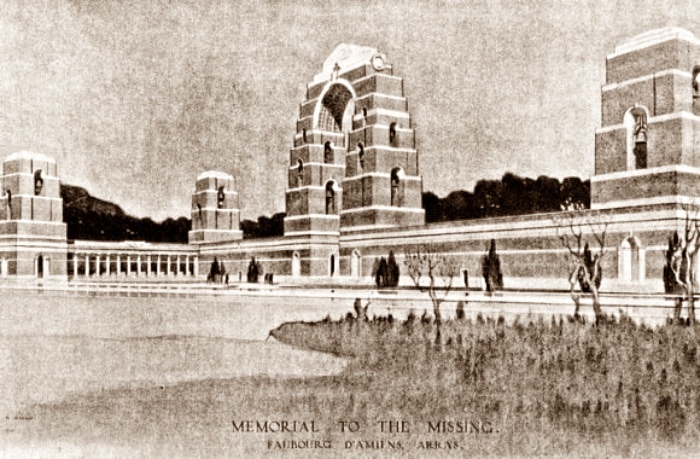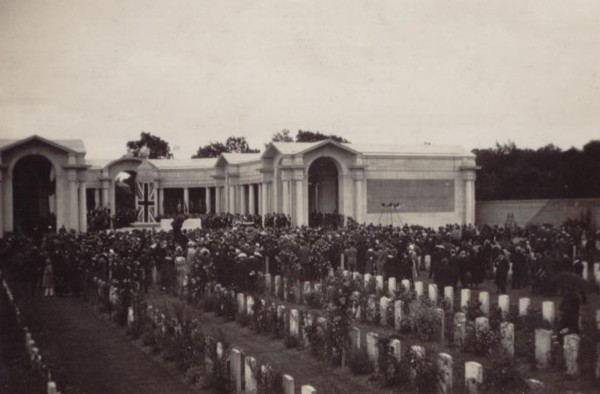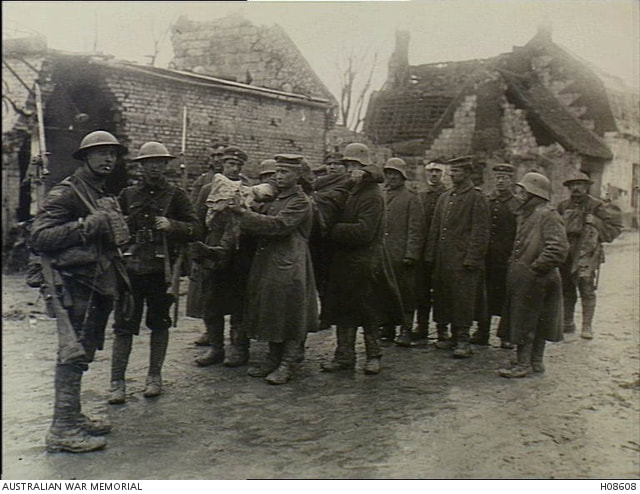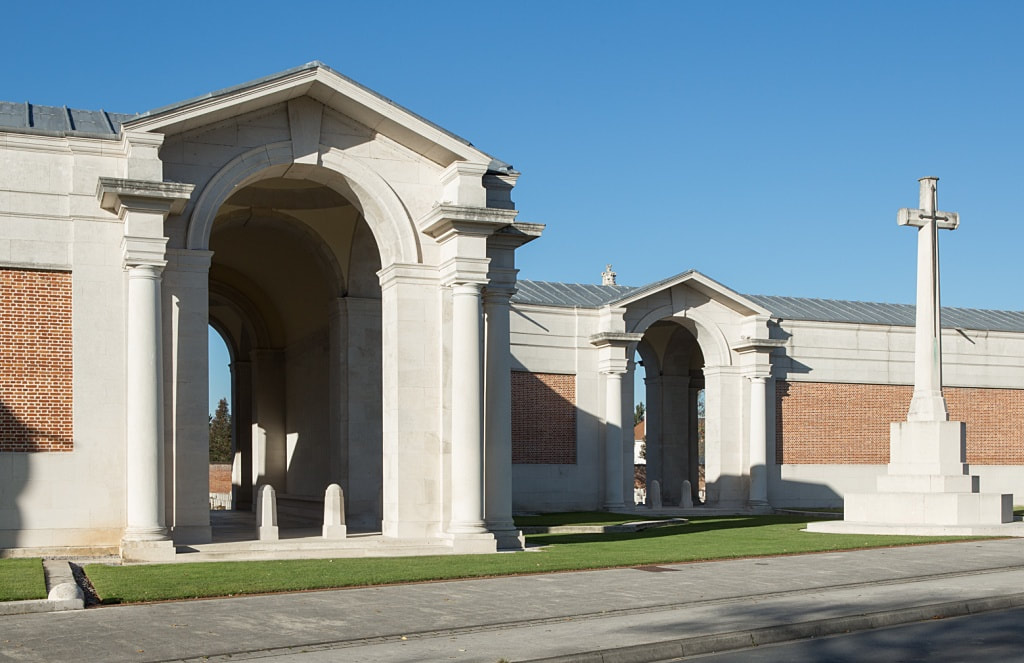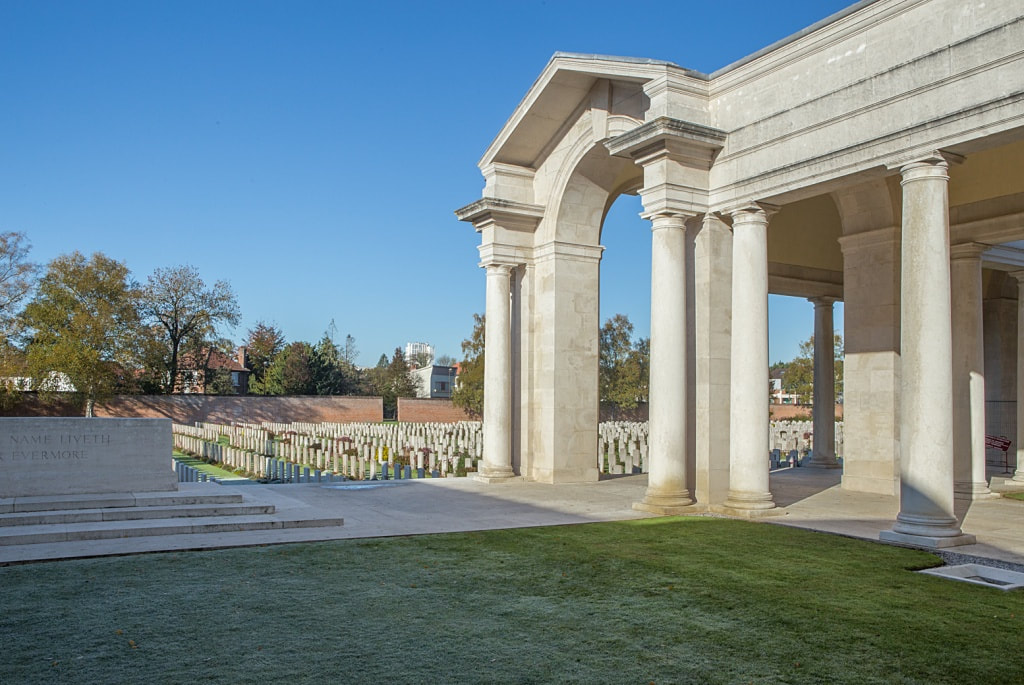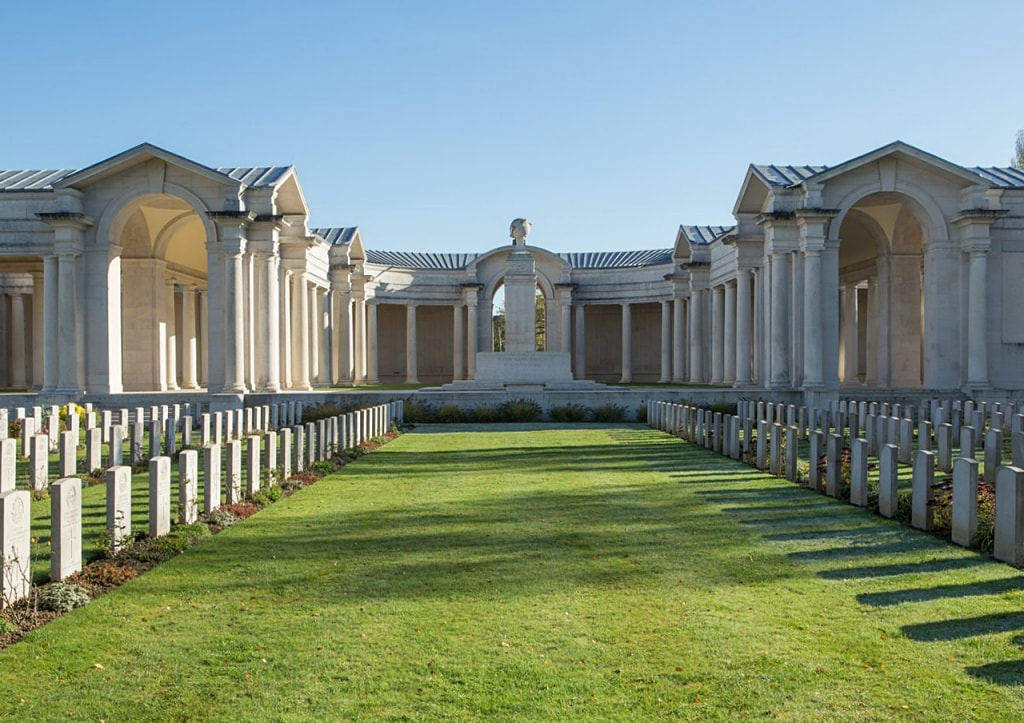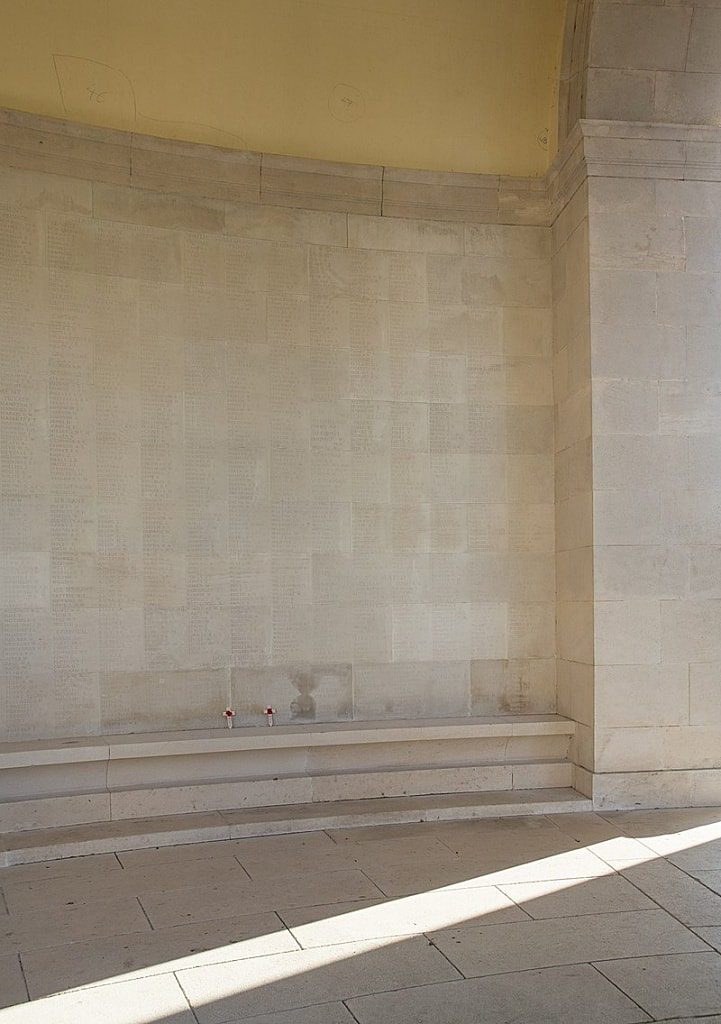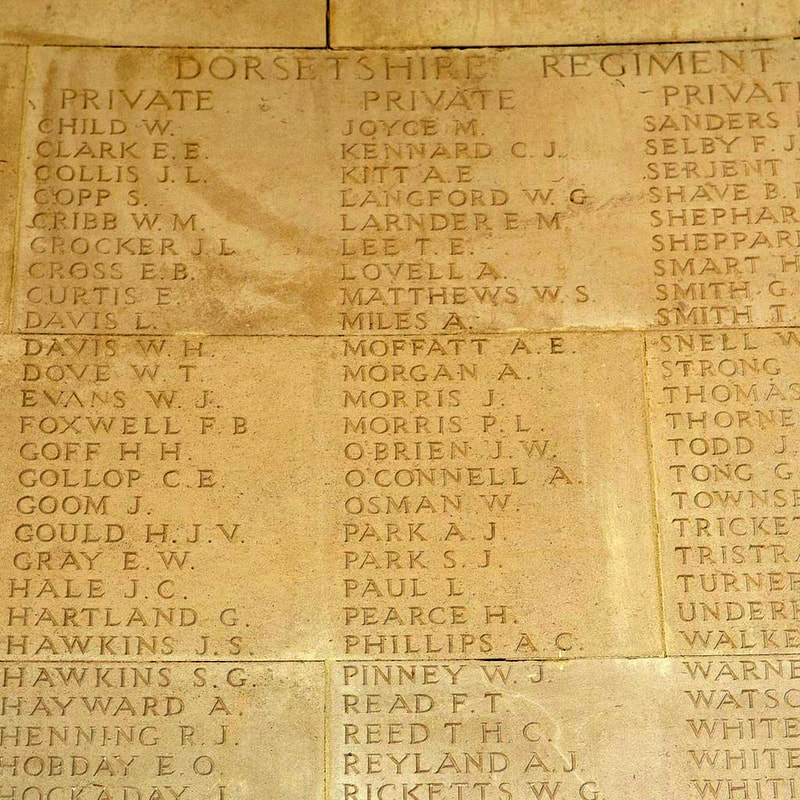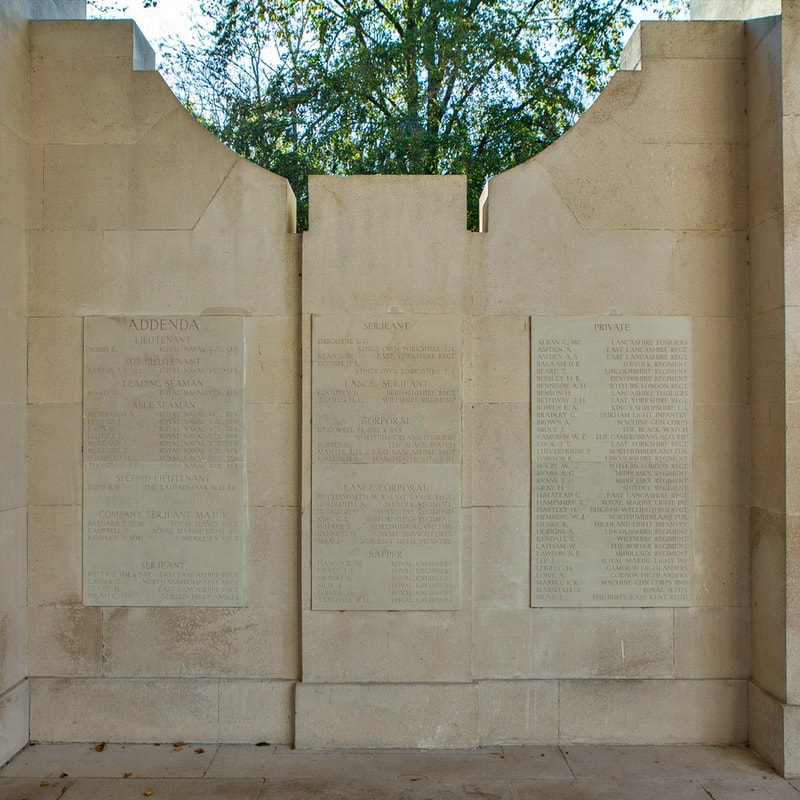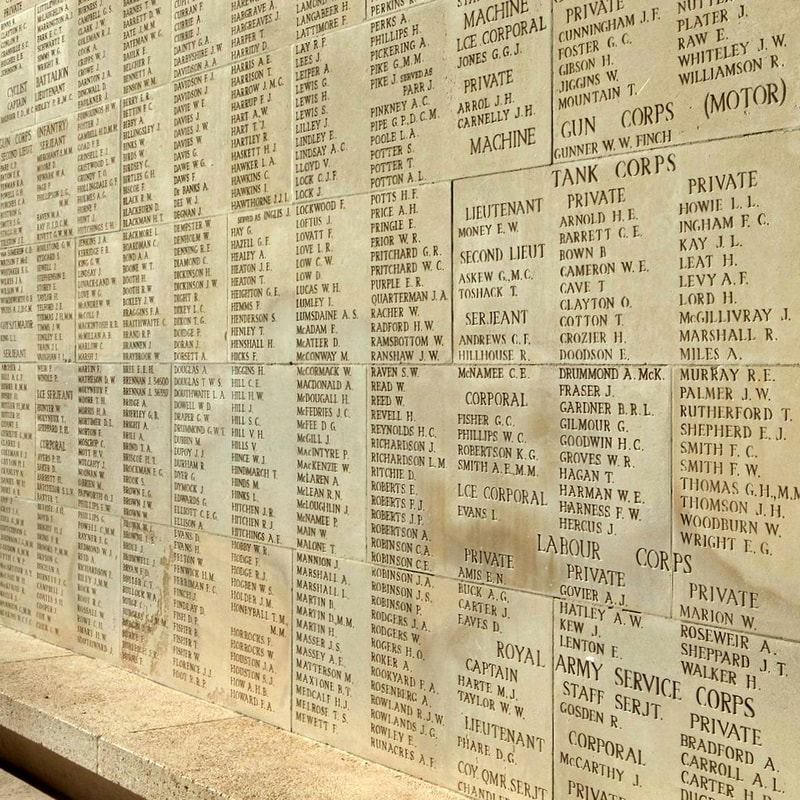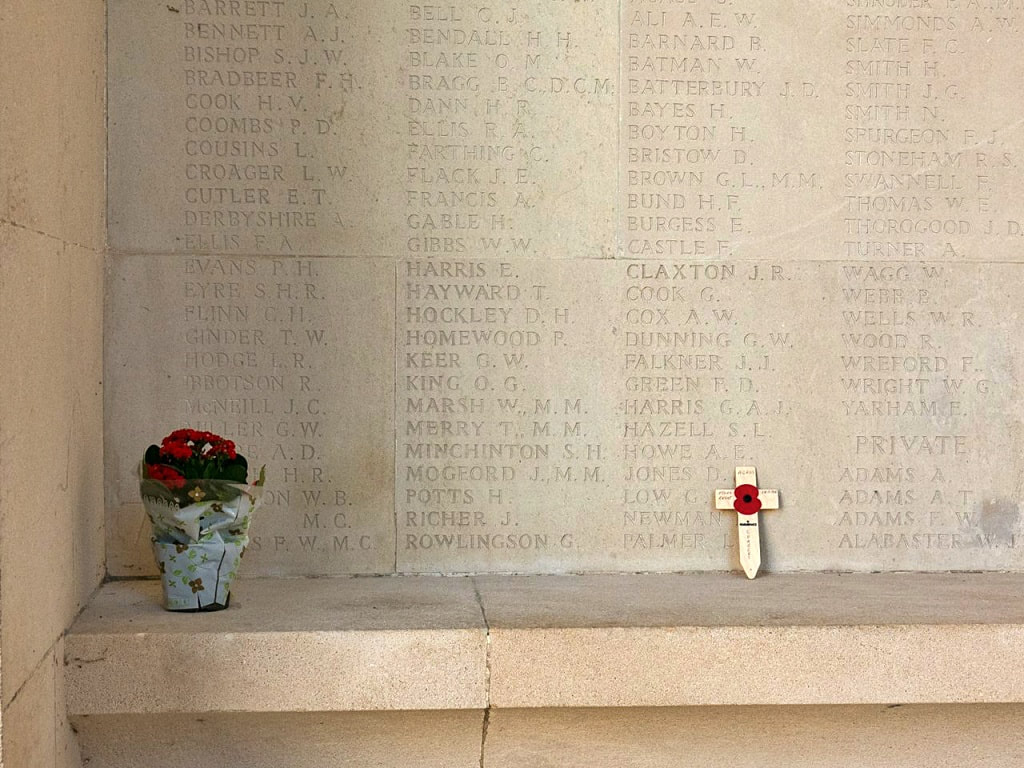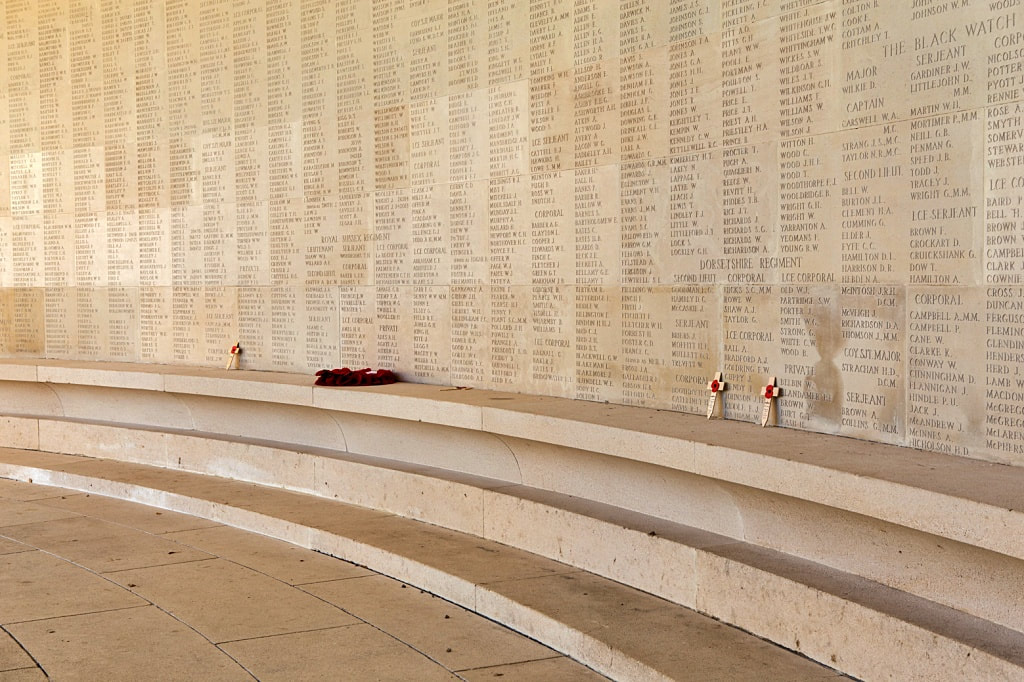ARRAS MEMORIAL
Pas De Calais
France
GPS Coordinates: Latitude: 50.28697, Longitude: 2.76065
Roll of Honour
Listed by Surname
Location Information
The Arras Memorial is in the Faubourg d'Amiens Cemetery, which is in the Boulevard du General de Gaulle in the western part of the town of Arras. The cemetery is near the Citadel, approximately 2 kms due west of the railway station.
Visiting Information
Wheelchair access to the memorial is possible via an alternative entrance at the rear of Faubourg-d'Amiens Cemetery.
Historical Information
The French handed over Arras to Commonwealth forces in the spring of 1916 and the system of tunnels upon which the town is built were used and developed in preparation for the major offensive planned for April 1917.
The Commonwealth section of the FAUBOURG D'AMIENS CEMETERY was begun in March 1916, behind the French military cemetery established earlier. It continued to be used by field ambulances and fighting units until November 1918. The cemetery was enlarged after the Armistice when graves were brought in from the battlefields and from two smaller cemeteries in the vicinity.
The cemetery contains over 2,650 Commonwealth burials of the First World War, 10 of which are unidentified. The graves in the French military cemetery were removed after the war to other burial grounds and the land they had occupied was used for the construction of the Arras Memorial and Arras Flying Services Memorial.
The adjacent ARRAS MEMORIAL commemorates almost 34,749 servicemen from the United Kingdom, South Africa and New Zealand who died in the Arras sector between the spring of 1916 and 7 August 1918, the eve of the Advance to Victory, and have no known grave. The most conspicuous events of this period were the Arras offensive of April-May 1917, and the German attack in the spring of 1918. Canadian and Australian servicemen killed in these operations are commemorated by memorials at Vimy and Villers-Bretonneux. A separate memorial remembers those killed in the Battle of Cambrai in 1917.
The adjacent ARRAS FLYING SERVICES MEMORIAL commemorates almost 1,000 airmen of the Royal Naval Air Service, the Royal Flying Corps, and the Royal Air Force, either by attachment from other arms of the forces of the Commonwealth or by original enlistment, who were killed on the whole Western Front and who have no known grave.
During the Second World War, Arras was occupied by United Kingdom forces headquarters until the town was evacuated on 23 May 1940. Arras then remained in German hands until retaken by Commonwealth and Free French forces on 1 September 1944. The 1939-1945 War burials number 8 and comprise 3 soldiers and 4 airmen from the United Kingdom and 1 entirely unidentified casualty. Located between the 2 special memorials of the 1914-1918 War is the special memorial commemorating an officer of the United States Army Air Force, who died during the 1939-1945 War. This special memorial, is inscribed with the words "Believed to be buried in this cemetery". In addition, there are 30 war graves of other nationalities, most of them German.
Faubourg d'Amiens Cemetery
Total Burials: 2,688.
World War One Commonwealth Identified Casualties: United Kingdom 2,392, Canada 153, South Africa 60, New Zealand 26, India 9. Total 2,640.
Other Nationalities: 29.
World War One Commonwealth Unidentified Casualties: 10.
World War Two Commonwealth Identified Casualties: United Kingdom 7.
World War Two American Casualty: 1.
World War Two Unidentified Casualty: 1.
Arras Memorial
Commemorated on Memorial: United Kingdom 34,672, South Africa 76, New Zealand 1. Total 34,749.
Arras Flying Services Memorial
Commemorated on Memorial: United Kingdom 911, Canada 46, Australia 17, India 6, New Zealand 2, South Africa 1. Total 983.
Both cemetery and memorial were designed by Sir Edwin Lutyens with sculpture by Sir William Reid Dick. The memorial was unveiled by Lord Trenchard, Marshal of the Royal Air Force on the 31 July 1932 (originally it had been scheduled for 15 May, but due to the sudden death of French President Doumer, as a mark of respect, the ceremony was postponed until July).
The Arras Memorial is in the Faubourg d'Amiens Cemetery, which is in the Boulevard du General de Gaulle in the western part of the town of Arras. The cemetery is near the Citadel, approximately 2 kms due west of the railway station.
Visiting Information
Wheelchair access to the memorial is possible via an alternative entrance at the rear of Faubourg-d'Amiens Cemetery.
Historical Information
The French handed over Arras to Commonwealth forces in the spring of 1916 and the system of tunnels upon which the town is built were used and developed in preparation for the major offensive planned for April 1917.
The Commonwealth section of the FAUBOURG D'AMIENS CEMETERY was begun in March 1916, behind the French military cemetery established earlier. It continued to be used by field ambulances and fighting units until November 1918. The cemetery was enlarged after the Armistice when graves were brought in from the battlefields and from two smaller cemeteries in the vicinity.
The cemetery contains over 2,650 Commonwealth burials of the First World War, 10 of which are unidentified. The graves in the French military cemetery were removed after the war to other burial grounds and the land they had occupied was used for the construction of the Arras Memorial and Arras Flying Services Memorial.
The adjacent ARRAS MEMORIAL commemorates almost 34,749 servicemen from the United Kingdom, South Africa and New Zealand who died in the Arras sector between the spring of 1916 and 7 August 1918, the eve of the Advance to Victory, and have no known grave. The most conspicuous events of this period were the Arras offensive of April-May 1917, and the German attack in the spring of 1918. Canadian and Australian servicemen killed in these operations are commemorated by memorials at Vimy and Villers-Bretonneux. A separate memorial remembers those killed in the Battle of Cambrai in 1917.
The adjacent ARRAS FLYING SERVICES MEMORIAL commemorates almost 1,000 airmen of the Royal Naval Air Service, the Royal Flying Corps, and the Royal Air Force, either by attachment from other arms of the forces of the Commonwealth or by original enlistment, who were killed on the whole Western Front and who have no known grave.
During the Second World War, Arras was occupied by United Kingdom forces headquarters until the town was evacuated on 23 May 1940. Arras then remained in German hands until retaken by Commonwealth and Free French forces on 1 September 1944. The 1939-1945 War burials number 8 and comprise 3 soldiers and 4 airmen from the United Kingdom and 1 entirely unidentified casualty. Located between the 2 special memorials of the 1914-1918 War is the special memorial commemorating an officer of the United States Army Air Force, who died during the 1939-1945 War. This special memorial, is inscribed with the words "Believed to be buried in this cemetery". In addition, there are 30 war graves of other nationalities, most of them German.
Faubourg d'Amiens Cemetery
Total Burials: 2,688.
World War One Commonwealth Identified Casualties: United Kingdom 2,392, Canada 153, South Africa 60, New Zealand 26, India 9. Total 2,640.
Other Nationalities: 29.
World War One Commonwealth Unidentified Casualties: 10.
World War Two Commonwealth Identified Casualties: United Kingdom 7.
World War Two American Casualty: 1.
World War Two Unidentified Casualty: 1.
Arras Memorial
Commemorated on Memorial: United Kingdom 34,672, South Africa 76, New Zealand 1. Total 34,749.
Arras Flying Services Memorial
Commemorated on Memorial: United Kingdom 911, Canada 46, Australia 17, India 6, New Zealand 2, South Africa 1. Total 983.
Both cemetery and memorial were designed by Sir Edwin Lutyens with sculpture by Sir William Reid Dick. The memorial was unveiled by Lord Trenchard, Marshal of the Royal Air Force on the 31 July 1932 (originally it had been scheduled for 15 May, but due to the sudden death of French President Doumer, as a mark of respect, the ceremony was postponed until July).
Entrance to Arras Memorial and Faubourg d'Amiens Cemetery
Shot at Dawn
40422 Private. Stephen Byrne, No.1 Coy.1st Bn. Royal Dublin Fusiliers executed for desertion on 28th October 1917, aged 30. (Served as M. Monaghan). Brother of Thomas Byrne, of 32, Usher's Quay, Dublin. Bay 9.
An Irishman who had enlisted under a false name, he deserted when ‘cold & ill’, apparently being fed up at having served for 8 months without leave. His place of execution not being known, he is commemorated amongst the Missing. (Putkowski, p. 212)
7711 Private J. Fox, 2nd Bn. Highland Light Infantry executed for striking a Superior Officer on 12th May 1916. Bay 8.
On 8 Apr 1916 at Thérouanne, his platoon was on parade for inspection. Second Lt O’Halloran, on finding Fox with a dirty rifle & boots, ordered the sergeant to take him to the orderly room. But Fox suddenly moved forward, saying ‘the rifle is not dirty…you’re no fucking officer’, & kicked him twice on the knee. The sergeant, fearing that Fox’s raised rifle might be used on the officer, disarmed him.
At trial, Fox testified to say that his mother had died 2 months previously & that he was worried about his paralysed sister. He added that he had been drunk the night before, & that morning had taken 2 glasses of rum (he had been seen in an estaminet earlier, but 3 witnesses believed him sober when on parade). ‘I had no intention of doing what I did……I feel very sorry for what I have done’.
After conviction, his record was revealed: 3 offences in the UK & 8 in France. Disobedience coupled with insolence; & insubordinate language in April 1915 led to 18 months’ imprisonment with hard labour. Of this, Fox served 8½ months before the sentence was suspended on 31 Jan 1916. Within 5 days of leaving prison, he was in trouble again; & then on 2 Mar, Fox had been charged with insolence to O’Halloran & failing to comply with an order.
His CO said Fox was ‘a naturally insubordinate fellow’; noted that he was reported to do his work quite well when in the trenches (though he had never taken part in an engagement); & considered execution was not necessary since he could not recall such an offence in his 23 years with the battalion. The Brigade commander felt an iron hand was needed, & the Divisional commander agreed.
The Corps commander noted that the incident happened during training & not when in contact with the enemy; & that the offence was so rare that deterrence did not arise, However the Army commander wrote: ‘I cannot conceive a more disgraceful violation of the principles of discipline’; & confirmation followed.
Fox was 1 of the 3 British soldiers executed for this offence, all on the Western Front, & all in 1916. (Corns, pp. 354-356)
40422 Private. Stephen Byrne, No.1 Coy.1st Bn. Royal Dublin Fusiliers executed for desertion on 28th October 1917, aged 30. (Served as M. Monaghan). Brother of Thomas Byrne, of 32, Usher's Quay, Dublin. Bay 9.
An Irishman who had enlisted under a false name, he deserted when ‘cold & ill’, apparently being fed up at having served for 8 months without leave. His place of execution not being known, he is commemorated amongst the Missing. (Putkowski, p. 212)
7711 Private J. Fox, 2nd Bn. Highland Light Infantry executed for striking a Superior Officer on 12th May 1916. Bay 8.
On 8 Apr 1916 at Thérouanne, his platoon was on parade for inspection. Second Lt O’Halloran, on finding Fox with a dirty rifle & boots, ordered the sergeant to take him to the orderly room. But Fox suddenly moved forward, saying ‘the rifle is not dirty…you’re no fucking officer’, & kicked him twice on the knee. The sergeant, fearing that Fox’s raised rifle might be used on the officer, disarmed him.
At trial, Fox testified to say that his mother had died 2 months previously & that he was worried about his paralysed sister. He added that he had been drunk the night before, & that morning had taken 2 glasses of rum (he had been seen in an estaminet earlier, but 3 witnesses believed him sober when on parade). ‘I had no intention of doing what I did……I feel very sorry for what I have done’.
After conviction, his record was revealed: 3 offences in the UK & 8 in France. Disobedience coupled with insolence; & insubordinate language in April 1915 led to 18 months’ imprisonment with hard labour. Of this, Fox served 8½ months before the sentence was suspended on 31 Jan 1916. Within 5 days of leaving prison, he was in trouble again; & then on 2 Mar, Fox had been charged with insolence to O’Halloran & failing to comply with an order.
His CO said Fox was ‘a naturally insubordinate fellow’; noted that he was reported to do his work quite well when in the trenches (though he had never taken part in an engagement); & considered execution was not necessary since he could not recall such an offence in his 23 years with the battalion. The Brigade commander felt an iron hand was needed, & the Divisional commander agreed.
The Corps commander noted that the incident happened during training & not when in contact with the enemy; & that the offence was so rare that deterrence did not arise, However the Army commander wrote: ‘I cannot conceive a more disgraceful violation of the principles of discipline’; & confirmation followed.
Fox was 1 of the 3 British soldiers executed for this offence, all on the Western Front, & all in 1916. (Corns, pp. 354-356)

